News
- Details
- Written by: Quintus Potgieter
- Category: Industry
It has taken a while but finally the Clean Energy Council of Australia (CEC) has released guidelines that will tighten home battery storage reliability in terms of installations. A picture of an 'exploded' lithium-ion battery was circulating on Australian social media channels back in March which spurred an ongoing push for more reliable installation methods.

In Australia, specifically, installation standards have not been upheld and installation training has not been prioritized as of yet. In the United States, the National Fire Protection Association has been training firefighters to respond to fires caused by energy storage systems, according to MicroGridKnowledge. The fires synonymous with home energy storage units is caused by thermal runaway. This is where one cell fails and catches fire which causes the rest of the cells in a unit to also catch fire, causing an explosion. A firefighter, Matt Pais, explains: "When lithium-ion burns, it creates its own oxygen. It can create a violent explosion depending on the chemistry. The cells can explode why they overheat. If you take 20 or 30 of those cells and subject them to heat when you're testing the cells, you can have huge amounts of toxins and flammables."
Thus, the CEC in Australia has released the installation and safety guidelines for installing home energy storage units. The CEC now has Solar Accredited Installer cards that an installer is required to have to ensure that an installer is proficient in the tools of installing home energy storage unit systems. They have currently accredited 4,800 installers in Australia alone. Recently, you did not have to have any form of formal training to install energy storage units inside homes.
According to One Step Off the Grid, the Installation Guidelines for Grid-Connected Energy Systems with Battery Storage would be able to ensure secure installations that are done correctly and minimize the chance of accidents occurring with the installation of the estimated 50,000 battery storage systems to be connected in Australia in the next year.
CEC Chief Kate Thornton said: "Everyone is excited by the potential future of a future created by a combination of renewable energy, home energy storage and smart energy technologies. The new guidelines are an important step in making that vision a reality. It is obviously important that industry professionals take these risks extremely seriously and operate in a way that ensures the safety of themselves, their colleagues and consumers."
These guidelines also rely on the energy storage unit companies to engineer reliable products that don't malfunction and explode. To emphasize reliable engineering, the Dean of Engineering at the Engineering Insitute of Technology, Steve Mackay, broached the topic in the nineteenth episode of the Engineering News Network. The reliability is not limited to energy storage units, but it would be a good reminder to energy storage unit manufacturers to build reliable systems. And most of the electronic devices we use today are powered by lithium-ion, so the reliability of lithium-based products needs to be emphasized.
Mackay says:
A lot of devices exhibit the 'bath tub' reliability curve which you're probably familiar with. Which means at the beginning of the life cycle of a product, high failure rate and then it settles down and then most of the product lifetime there is a low failure rate. Then, near the end of the lifetime you get that tweak upwards of high failure rate.
No product is going to be manufactured with a 100% reliability, for the simple reason that it would cost too much. Manufacturers and vendors wouldn't be able to sell their products. A lot of products - such as phones - do have a lower than 100% reliability. That is the way of the commercial world.
Mackay concludes by saying the only industry that needs to have complete, one hundred percent reliability is in the manufacturing of aircraft parts. However, it is clear that policymakers cannot keep up with the speed of invention in the battery storage industry, but, the Clean Energy Council of Australia are monitoring the situation and ensuring that installation methods are safe and reliable.
To receive accreditation in Solar PV installations, visit the Solar Accreditation Australia website.
- Details
- Written by: Quintus Potgieter
- Category: Industry
The civil engineering, defense, forestry and agriculture industry have been adopting LiDAR (Light Detection and Ranging) technology. A trend that started in 2014 and will continue to 2020. This according to a report by Allied Market Research that has published its findings in a journal titled Global LiDAR Market - Size, Industry Analysis, Trends, Opportunities, Growth and Forecast, 2013-2020.

Explaining the benefits of LiDAR, Director of Remote sensing at Dewberry, said: "The laser ranging device sends out millions of pulses - today they can send out over four hundred thousand pulses in one second. That technology gives you the distance and the range to the target." The technology also uses global positioning systems and IMU systems as well. It is the most reliable way of navigating terrain that currently exists in the world of today. It is the technology that allows self-driving cars to navigate and avoid obstacles that come across its path. Hence, the LiDAR market is growing rapidly.
The Indian government also spoke of how they will be adopting more LiDAR technologies in the near future. The Surveyor General of India spoke to The Hindu, saying: "Use of LiDAR technology is quite beneficial and it gives quality data in digital form in a short time. This data can be used in many projects related to roads, canals, surface transport, city planning, landslides, irrigation etc,"
The report by Allied Market Research says that the LiDAR market is expected to rake in $3.22 billion by 2022. The reason for the spike in the market, analysts say, is due to the automotive sector and civil engineering industries continuing to make use of LiDAR technology.
LiDAR technology has been estimated to have the biggest CAGR (compound annual growth rate) in the UAV (unmanned aerial vehicle) sector due to the number of drones being purchased by the media, entertainment, precision farming and personal hobbyist industries, including the governmental use as well. The market will grow most in the Asia-Pacific regions between 2016 and 2022, the report said.
However, North America currently owns 45% of the current market in 2015, with Europe trailing them with a 33% revenue share, according to DirectionsMag.
Ford has recently used LiDAR to allow a self-driving car to see in the dark. To see what a self-driving car utilizing LiDAR technology would 'see', check this video out:
- Details
- Written by: Quintus Potgieter
- Category: Industry
The competition for space on your wall in your garage or in the basement of your business is heating up in the energy storage battle as more companies bring out their answer to renewable, clean energy units. Tesla's Powerwall caught the attention of the public globally, whilst in Australia, Redflow's ZCell impressed audiences. Now, Mercedes-Benz and Lockheed and Martin are entering the game, to confuse consumers even more as to who to give their money to.
Mercedes-Benz says:
Innovative new energy storage systems for businesses and private customers -- powered by lithium-ion batteries commonly found in electric vehicles -- are now able to efficiently store and release energy on demand. Lithium-ion energy storage systems are at the ready to provide complete freedom to consumers

Therefore, Daimler AG with the contributions of Deutsche ACCUMOTIV have developed their own home energy storage systems and have begun shipping them. The companies supply the latest Mercedes-Benz models with their electric systems.
Harald Kroger, the Head of Development Electrics/Electronics and E-Drive Mercedes-Benz Cars said: "There is tremendous interest in our energy storage units and we have already received numerous orders. Over the coming months, we will continue to step up and expand both sales in Germany and on the international market."
Daimler can reportedly connect up to 8 battery modules that have 2.5kWh each that would add up to 20kWh, which would provide a good backup system for grid peak times. According to their press release, the price for the photovoltaic cells would be calculated based on the customized package a customer would order. These would include the photovoltaic system, battery inverter, energy management services from Daimler and the Mercedes-Benz energy storage unit. Then installation costs as well.
In Daimler's press release they spoke of the reliability of the product they are launching:
Their network of qualified specialist installers take care of providing the end customers with on-site advice, planning, compiling an individual quotation for all components and the actual installation. Stationary battery storage units are generally installed together with a photovoltaic system. Some 500 installers throughout Germany have already undergone training in collaboration with partners.

Lockheed Martin also wants in on the action, it seems. They are launching an industrial-sized photovoltaic system that trumps the current Tesla Powerpack. The Powerpack currently pushed out 100kWh, but Lockheed Martin's will achieve both 250kWh and 500kWh depending on which one is purchased. For now, it doesn't look like they will be doing private (home) energy storage systems, however, it seems they are trying to assist electricity grids around the world so that cleaner energy can be produced.
Whether or not Lockheed Martin becomes a major competitor remains to be seen due to their focuses on aerospace engineering that seems to be getting more attention than energy storage. Thankfully, the more entrants into the private and public energy sector mean more security training and further development in the industry which relates to safer batteries and a good selling price point.
- Details
- Written by: Quintus Potgieter
- Category: Education
Have you ever been in the position where you've had to communicate with a person from the deaf community? It is a daunting task for some to attempt communication with a person who has that disability due to not understanding sign language. Two students from the University of Washington intend to redesign the way deaf people communicate with tech-gloves called Sign Aloud. The students (Thomas Pryor and Navid Azodi) won a competition named the Lemelson-MIT Student Prize that searched the United States for new inventions from students. The Sign Aloud gloves can be worn by a deaf person, who then would talk sign language and the tech attached to the gloves would convert the sign language movements into text or speech.
Talking to UW Today, the students said: "Our purpose of developing these gloves was to provide an easy-to-use bridge between native speakers of American Sign Language and the rest of the world. The idea initially came out of our shared interest in invention and problem solving. But coupling it with our belief that communication is a fundamental human right, we set out to make it more accessible to a larger audience."
To see what it is capable of, check out this video:
The two students are calling it an American Sign Language Translator. The gloves have sensors connected to the hands and the wrist that measure hand position and movement. Then through Bluetooth, the data is sent to a program coded by the students that convert the movements into actual text or speech.
Some online commenters are saying $10,000 is not enough money to jumpstart the project and have encouraged the students to either start a Kickstarter page or take the idea to Shark Tank - a reality program for inventors - to get their gloves funded.
Pryor and Azodi say that the gloves for right now are a prototype and require clunky elements like a laptop and the gloves themselves. The students say that the future of the product could be an app on a smartphone. However, their prototype right now seems to be a working, functional method of converting sign language into text and speech, that is understandable to able-bodied people.
- Details
- Written by: Quintus Potgieter
- Category: Industry
Product engineers reinvented the wheel this week. Okay, maybe they just redesigned the hair dryer. Dyson known for their vacuum cleaners, hand dryers, fans, and heaters has now entered the beauty game with their new design, that reportedly cost $71 million to develop. The company has called it the Dyson Supersonic and will cost $400. The price tag is astounding for a hair dryer, however, the fashion industry is probably going to latch on to the premium product quite quickly, getting the money to those engineers who arguably reinvented the hair dryer.
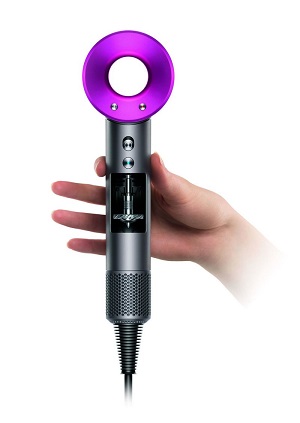
Tom Crawford, the Head of Product Development for New Categories at Dyson told TechCrunch, "When Dyson goes into a new category, we always think about how we can make it better. Part of the challenge is making sure we invest in the right technology and testing to do so. The first part of this was to learn the science of hair. How to test it, how to make it repeatable, and then how to measure it. We built our own state of the art laboratory dedicated to investigating the science of hair."
Yahoo spoke to Dyson as well, revealing that the company sent their engineering team to beauty school to gain inspiration before developing the new hairdryer. How many engineers can say they've been to beauty school in their illustrious careers? Dyson said, "We are experts in all things airflow, fluid dynamics, hardware...all things engineering. But we surely aren't style experts. Having a group of young engineers attend styling classes made them see the end benefit of this machine and how the hair dryer can truly be improved."
What is under the hood, you ask?
Dyson says they have created the Dyson digital motor V9 . It is a small motor that the engineers managed to fit in the handle of the dryer, instead of the usual head placement of the motor in other dryers. They have also developed a glass bead thermistor which transmits data to a microprocessor which the company says "intelligently controls the patented double-stacked heating element."
We're starting to understand why this engineered hair dryer costs $400.
Check out this video that shows off the technology - the part we care about most, right engineers? - of the new Dyson Supersonic.
- Details
- Written by: Quintus Potgieter
- Category: Developments
Researchers at the University of Minnesota have written a report in Physics of Fluid that make a case for a change of methodology when studying turbulence pertaining to jets.
The researchers say that fluid flows in predictable patterns with high-speed jets which explain why jets are so loud. The team wants to use their findings to influence the dynamics of jets to minimize the volumes they produce.
Joseph W. Nichols, an assistant professor of aerospace engineering and mechanics at the University of Minnesota, spoke to Eureka Alert, saying, "Back during the 1960s, it was shown that coherent parts of turbulent fluctuations inside jets are connected to instability wavepackets, which are linked to noise radiation. A wave packet is an oscillation that repeats if you look at it over a short time and length scales, but when you zoom out you can see it varies slowly over a long distance."
The abstract published by the team explains:
For supersonic jets, the optimal response closely resembles a wavepacket in both the near-field and the far-field such as those obtained by the parabolized stability equations, and this mode dominates the response. For subsonic jets, however, the singular values indicate that the contribution of sub-optimal modes to noise generation are nearly equal to that of the optimal mode, explaining why the PSE do not fully capture the far-field sound in this case.
 Mihailo Jovanovi, an associate professor of electrical and computer engineering, said: "We treat high-speed turbulent jets as amplifiers that take fluctuations inside the jet as inputs and give back sound. And we use this mathematical framework to identify modes that induce large-output amplification and generate loud noise."
Mihailo Jovanovi, an associate professor of electrical and computer engineering, said: "We treat high-speed turbulent jets as amplifiers that take fluctuations inside the jet as inputs and give back sound. And we use this mathematical framework to identify modes that induce large-output amplification and generate loud noise."
The studies into quietening down jet planes could lead to healthier airport staff, say the researchers. It was confirmed by health professionals last year that exposure to loud aircraft could lead to heightened blood pressure.
- Details
- Written by: Quintus Potgieter
- Category: Developments
Aerospace engineering will reach another milestone when SpaceX and NASA launch the Red Dragon on a mission to reach Mars. Elon Musk has announced that by May 2018, they want to be prepped and ready to go to Mars. The mission will see a bigger version of the Falcon 9 - which successfully landed itself on a barge earlier this year - known as the Red Dragon, enable a capsule to land on the surface of Mars.
The end game for SpaceX would be getting more spacecraft to Mars and starting a colony on the planet. Musk is planning to let the media in on their plans for colonization of Mars in September. This keynote will happen at the International Aeronautical Congress in Mexico.

The 2018 launch will be an unmanned launch and will see the Red Dragon travel to Mars and attempt to land on the surface. According to Musk's twitter, the engineer said: "Dragon 2 [the spacecraft travelling to Mars] is designed to be able to land anywhere in the solar system. Red Dragon Mars missions are the first test flight." This means that Mars is not the only planet SpaceX is considering.
"Building on an existing no-funds-exchanged collaboration with SpaceX, NASA will provide technical support for the firm's plan to attempt to land an uncrewed Dragon 2 spacecraft on Mars. This collaboration could provide valuable energy entry, descent, and landing data to NASA for our journey to Mars while providing support to American industry," NASA said in a statement.
NASA intends to take humans to Mars by 2030, hence their involvement in the SpaceX launch. Both companies want to theoretically entertain the idea of sending humans to the Red Planet and the data that comes from this mission would be beneficial to both of them.
SpaceX has also announced they were successfully awarded an $83 million contract to launch a GPS satellite into space, funded by the US Air Force. Lockheed Martin, an aerospace engineering and design company - who are busy working on the next Concord-like aircraft - used to be the only company entrusted with space launches but it seems SpaceX's recent successes in the industry has changed the game up.
A Lieutenant General Samuel Greaves, head of the air force's Space and Missile Systems Centre, told the Guardian: "This GPS III launch services contract award achieves a balance between mission success, meeting operational needs, lowering launch costs, and reintroducing competition for national security space missions."
- Details
- Written by: Quintus Potgieter
- Category: Industry
The United States' first shipment of liquefied natural gas (LNG) has made its way to Europe this week. The U.S. has always been a big LNG producer but not big on export. Now that the country is becoming an exporter, analysts are saying it will be causing competition in the LNG market.

The market has been dominated by Russians companies. However, Thierry Bros, an analyst at Societe Generale told Wall Street Journal: "It's the start of the price war between U.S. LNG and pipeline gas."
The U.S. delivered the LNG to Portuguese company Galp Energia. Analysts say that the U.S. will become a key player in LNG exporting by 2017.
Russia is currently shipping LNG that is 35% more expensive than the U.S, but according to WSJ, the suppliers were prepared for a price war and would be able to cut rates in half. Russia cannot afford to lose business in the LNG sector due to the export being one of the most profitable exports the country has.
An energy analyst from Strategy&, Rui Almeida, spoke to SputnikNews about the Russians' situation:
Gazprom [the Russian energy company] will be faced between losing market share or lowering prices. And Gazprom has publicly said they will defend market share so the best is on lowering prices. What we may see play out in gas is not dissimilar to Saudi Arabia's strategy in crude market - going for market share, maintaining production to price out higher marginal cost producers namely US oil. We may witness a similar strategy by Gazprom as it protects market share in Europe.
- Details
- Written by: Quintus Potgieter
- Category: Industry
Cybersecurity engineering is quickly becoming a lucrative field to become well educated in due to the digital exodus that companies are making into cloud-based solutions. Entire companies and even power utilities that service an entire country are moving their operations and interfaces into the cloud, using the Internet of Things to access data output they were previously never able to observe. These systems need security and that is where cyber security engineers come in.
Tertiary institutions now offer modules that would assist individuals with becoming proficient in securing companies, and in turn, protecting them from cyber attacks. To lay the groundwork for being qualified as a cyber security engineer, an individual - for example - could take a six-week Cybersecurity for automation, control, and SCADA systems course.
CloudPassage, who offer cyber security to enterprises, say that cyber security education in U.S. tertiary institutions got an 'F' for cybersecurity education. The group says that they conducted research of 121 top-ranked U.S. universities and discovered shocking revelations.
Their findings regarding the top 50 universities [out of the 121 surveyed] revealed:
- None of the top 10 U.S. computer science programs require a cybersecurity course for graduation. In fact, three of the top 10 university programs don't even offer an elective coourse in cybersecurity
- University of Michigan (ranked 12th) is the only one of the U.S. News & World Report's top 36 U.S. computer sccience programs that requires a security course for graduation
- Only three of Business Insiders' top 50 U.S. computer science programs require a cybersecurity course for graduation: University of Michigan, Brigham Young and Colorado State University
 CloudPassage also quoted Commerce Secretary, Penny Pritzker, who said that there are 210,000 unfilled cybersecurity jobs in the U.S.
CloudPassage also quoted Commerce Secretary, Penny Pritzker, who said that there are 210,000 unfilled cybersecurity jobs in the U.S.
Robert Thomas, the CEO of Cloudpassage said: "There needs to be a fundamental shift in the cybersecurity paradigm; we must get to a point where every university requires computer science majors to complete cybersecurity training as a graduation requirement, so that the programmers and developers of the next generation have security front-of-mind when delivering products to the market."
These revelations reported on whilst the Government Accountability Office of the United States issues a warning about cybersecurity of vehicles. The fact that self-driving cars can be hacked into is becoming a concern for the GOA and the current capability hackers might have to hack into vehicles.
"Researchers have shown that these interfaces -- if not properly secured -- can be exploited through direct, physical access to a vehicle, as well as remotely through short-range and long-range wireless channels. For example, researchers have shown that attackers could compromise vulnerabilities in the short-range wireless connections to vehicles' Bluetooth units -- which enable hands-free cell phone use -- to gain access to in-vehicle networks, to take control over safety-critical functions such as the brakes."
- Details
- Written by: Quintus Potgieter
- Category: Industry
Engineers are often presented with an opportunity to create something they never thought they'd be attempting due to the way humans integrate with technology. Humans are constantly staring down at their smartphones whether it's the increasingly dangerous texting and driving in a car, or walking down the street, with their eyes glued to the screen.
Engineers in Germany noticed that when people look at their smartphones at traffic lights, they tend to ignore the traffic lights.
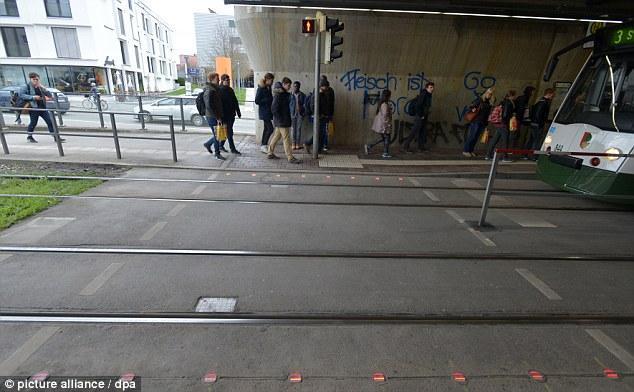 According to the Washington Post, the city of Augsburg will be looking into implementing traffic lights built into the pavement. This way, people who are looking down at their phones will see an illuminated pavement and know when it is safe to walk over the road. The light-up pavements have been tested at tram stations in the town, and may lead to further development if proven to be successful.
According to the Washington Post, the city of Augsburg will be looking into implementing traffic lights built into the pavement. This way, people who are looking down at their phones will see an illuminated pavement and know when it is safe to walk over the road. The light-up pavements have been tested at tram stations in the town, and may lead to further development if proven to be successful.
Stephanie Lermen, a spokeswoman for Augsburg, said: "It creates a whole new level of attention."
But some of the German residents of the town are not convinced pavements that light up with the colour of the traffic lights are good to have. The greater public are not convinced taxpayer money should be spent on the pavement lights.
Multiple reports in several countries have alluded to the fact that smartphone distraction in public areas is killing humans, which makes the case for engineered solutions for life-saving inventions.
Should other countries follow suit or are the light-up pavements a waste of taxpayer money?
- Details
- Written by: Quintus Potgieter
- Category: Developments
The immediate future of energy storage is not the full replacement of the grid but rather the alleviating of strain on the grid through the use of batteries. Territories such as the United Kingdom, the United States, and Australia have been early adopters of energy storage technology and are looking forward to using battery technology during peak grid times, thereby, saving money and allowing the grid to operate optimally.
However, Germany is not as convinced that battery storage technology is for them. According to GreenTechMedia, a study named Merit Order for Energy Storage Systems 2030 was conducted over a three-year period by the Federal Ministry of Economic Affairs and Energy.
 Christoph Pellinger, who led the study, says that they believe energy storage batteries will not be able to meet Germany's energy requirements in the next ten years. He went on to say, "I can think of lithium-ion battery storage for primary frequency control: however, the market is rather small, with less than 600 megawatts in Germany and 3,000 megawatts in Europe. So far we do not see batteries on the grid scale for load-shifting purposes in Germany."
Christoph Pellinger, who led the study, says that they believe energy storage batteries will not be able to meet Germany's energy requirements in the next ten years. He went on to say, "I can think of lithium-ion battery storage for primary frequency control: however, the market is rather small, with less than 600 megawatts in Germany and 3,000 megawatts in Europe. So far we do not see batteries on the grid scale for load-shifting purposes in Germany."
The report - to be published soon - will suggest practical energy saving methods to ensure Germany stays on track in terms of energy goals. Other countries weighing up their energy options might be able to learn from Germany if they can produce renewable energy without the oncoming onslaught of battery technology.
The three suggestions to the German government, in the case of energy conservation, will be:
- Residential and industrial power-to-heat systems
- Demand-side management of industrial and residential energy consumption
- Vehicle-to-grid technologies - which has also recently been suggested at train stations in the United Kingdom. The idea is that electric cars would be parked in train stations the entire day, hence, they would be plugged into a network that would assist the grid using the energy storage technologies inside the cars.
Demand-side management is used around the globe to encourage consumers to change their usage practices to alleviate strain on the grid. The process of demand-side management is usually performed during peak hours when everyone is at home and utilizing energy-heavy appliances.
If countries continue the demand-side management methods of grid balancing far into the future, the Dean of Engineering at the Engineering Institute of Technology, Steve Mackay, says there are methods of energy saving which are severely underrated.
In the twenty-first episode of the Engineering News Network, Mackay says that the use of energy saving bulbs has been a successful idea with a good approach, however, he believes energy saving bulbs have been a yardstick that is possibly not long enough for how much energy saving actually has to happen in the world. "Humans tend to have a psychological effect called the 'anchoring effect' and we tend to focus on the little things. One should also expand one's horizon and perhaps think of larger things," he said.
In the current world where affording home energy storage batteries is a pipe dream for some, energy saving solutions still need to be considered. "For example, if you look at your home, one of the biggest savings you could make is not so much the light bulbs, but the heater or the dryer for your clothing. If you cut back on that, you are looking at significant savings because it chews up quite a lot of power. The same thing for your pool pump and lots of other power consuming devices," Mackay said.
Pellinger - who is soon to publish findings on grid balancing in Germany - has his doubts about residential batteries become the norm in the near future. He said: "Batteries for residential storage might have an impact, but they are even less economically viable than most analysts think. Home storage units often consume a surprising amount of electricity themselves in standby mode, and this is rarely taken into account."
- Details
- Written by: Quintus Potgieter
- Category: Education
As the world becomes more fast paced and more interconnected through the internet, some students decide that online tertiary institutions would probably fit them more than an on-campus solution to engineering studies. These students are usually cautioned and told that online qualifications do not lead to employment in the industry and that online studying still has a long way to go before it is fully recognised. However, engineering qualifications over the internet have become more respected over time. Open distance learning in the engineering field is becoming more frequent in the world where engineers are required to be on site, working, and broadening their knowledge as their industry changes.
USNews spoke to Jack Cullen, president of Modis, a tech staffing agency. He said: "Now that you're seeing more and more people in that hiring chair that have come from perhaps their own online education, you're seeing a lot more acceptance of it."
 Cullen believes that online engineering education solutions are beneficial due to an engineer being able to "work and pursue a degree at the same time". He also says engineers studying towards a master's degree usually apply what they are learning to the work they are currently doing.
Cullen believes that online engineering education solutions are beneficial due to an engineer being able to "work and pursue a degree at the same time". He also says engineers studying towards a master's degree usually apply what they are learning to the work they are currently doing.
Dani McDonald, vice president of national engineering recruitment at Kelly Services, said: "The degree at the end of the day is really just a credibility statement. They're looking for your experience and what you've contributed and what you will contribute to their organization." However, she also says employers like to see a name of a university they are familiar with.
Charles Muwandagara, an engineer who is currently working on power stations across Africa, recently graduated with his advanced diploma in mechanical engineering from the Engineering Insitute of Technology (EIT), an online institution. Through broadening his knowledge in the industry he was currently working in, he was promoted to project supervisor.
When asked about his diploma and whether he felt it was a necessary addition to his skillset through online education, he said: "It was very practical. To run a project you need those basic skills."
Muwandagara also says that studying engineering whilst already in an engineering role can lead to promotion. He said: "There is promotion. I could be superintendent on my next project." He also said that he is setting his sights on a master's of industrial automation through online institutions whilst working in the field, certain that it would boost his career. Colleagues of Muwandagara have also taken to online institutions due to noticing how beneficial it can be to further build on their curriculum vitae.
- Details
- Written by: Quintus Potgieter
- Category: Education
The G7 (Group-of-Seven) nations have vowed to uphold a promise that would see agricutural innovation and investment be prioritized around the world.
The statement made by the G7 read: "Motivated, skilled and enterprising farmers are essential for the growth of the agricultural sector. We will help farmers enhance their capability and skills by facilitating access to information and communication technologies, precision farming and agricultural innovations."
That's where the agricultural engineers come in. Farming technologies need to be developed to assist food security in the world of today so that in the future, there is enough food for the growing population.
Makiko Tsugata, a senior analyst at Mizuho Securities said: "There are no other options for farmers but to rely on technologies developed by companies if they want to raise productivity while they are greying. The government should help them adopt new technologies."
The University of Georgia's engineers are warning that food production in the agricultural industry cannot keep up with the rate at which humans are being born. According to OnlineAthens, the world's population will spike from the current 7 billion people, to 9.5 billion in 2050.
UGA agricultural engineer, K.C. Das spoke at one of the university's conferences and said that food production needs to increase by 70 percent if the world intends on accomodating 9.5 billion people by 2050. Das spoke to the American Society of Agricultural and Biological Engineers, saying that changes will have to be made in food production in order for the industry to survive with that heavy of a demand.
 "We have to do it by increasing the intensity of production, and this can have all kinds of unintended consequences for the environment," said Das.
"We have to do it by increasing the intensity of production, and this can have all kinds of unintended consequences for the environment," said Das.
Another concern for agricultural engineers is that to produce these foods and to transport them around the world, fossil fuels are still being utilized. Clean, renewable energy is the logical step forward. Das said, "You're using as much gasoline in the food you consume as you are using driving."
He says 19 percent of all U.S. energy and 70 percent of the world's water is used up by the agriculture industry. Another incredible statistic from UGA is that 8 percent of greenhouse gas emissions are also as a result of food production.
Changying Li, a scientist at UGA, said: "The amount of agricultural land is stagnant, and turning more land into agricultural use isn't really the answer -- but greater efficiency can help the world meet the challenge. Increasing food production is one of the greatest challenges facing producers and engineers."
- Details
- Written by: Quintus Potgieter
- Category: Industry
Tesla has announced the price information on its commercial and utility-scale products. They will be selling what are known as 'Powerpacks'. Is it time to replace that old generator powering your workplace once the lights go down? Perhaps you should hold onto it a little longer. Critics are saying Tesla's Powerpacks are on the expensive side.
The minimum amount of Powerpacks you can order today is 2 Powerpacks at the price of US$47,000 each. That is just for the Powerpack itself. The batteries come with a US$65,000 Bi-directional 250 kW Inverter and support hardware that will set you back US$3,000. Then you pay extra for installation.

Electrek confirms the least expensive Powerpack solution will set a business/customer back US$162,000 for 200 kWh of energy and 100 kW of peak power.
If an industrial complex is interested in clean, renewable energy, there is a 54 Powerpack solution from Tesla, which would set a company back US$3,217,000.
Tesla says the Powerpack is ideal for peak shaving which discharges "at peak demand to avoid or reduce demand charges" as well as serving as an emergency backup in grid interruption circumstances and load shifts so that a customer can avoid hefty energy prices.
A supposed customer utilizing the Powerpacks has written a testimonial, vouching for the energy solution. The customer in question is Jackson Family Wines and they wrote:
With Tesla Energy, we have taken a two-fold approach to energy management at our wineries by improving operational efficiency across all lvels of our organization and reinvesting those savings in onsite renewable energy systems.
Will you be getting these Powerpacks for your company?
- Details
- Written by: Quintus Potgieter
- Category: Developments
The interconnectivity of the components in a factory. This used to mean all the engineers and assembly line workers being on the same page. These days it means connecting the robots on the assembly line to an Internet of Things network so that they can talk to each other and ensure the assembly line keeps working in accordance with its coding.
Dynamic Group is a medical devices and precision products manufacturer in the United States and is also in the process of automating some of its assembly lines with the help of robotics. They have installed three robots that take care of repetitive tasks.
Joe McGillivray, the CEO of Dynamic Group said: "One of the main reasons we needed to look towards automation was difficulty with staffing. We're lucky enough to live in a place that has high wages and low unemployment which is great on a daily basis, normally, but it's difficult as someone who runs a business."
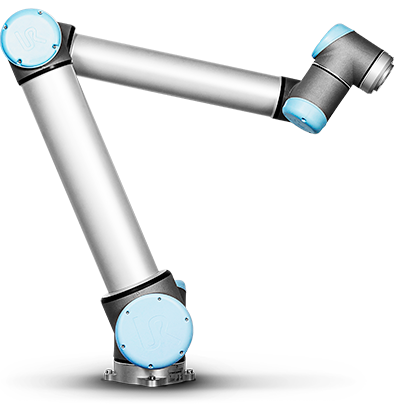
Dynamic Group says that the robots have increased productivity by 400% inside the factory. McGillivray says that this is because usually there would have to be three operators in the factory on a shift but now with the robots present there can be one operator on one shift.
"We essentially quadrupled our production capacity," said McGillivray.
The industry robot they utilize is the UR10 robot from Universal Robots. It is the largest industrial robot arm that Universal supply and can lift weights of up to 22 lbs.
The fact of the matter is that if multiple robots are going to be installed into a factory, they must be interconnected through the Industrial Internet of Things. To calculate what effect the automated industrial revolution might have on the industrial industry, Morgan Stanley Research, and Automation World investigated.
It resulted in a statistic that stipulated that industrial companies' IIoT (Industrial Internet of Things) expenditure would increase from its current 8 percent to 18 percent over the next five years. The report also said that "discrete automation is expected to see the greatest [IIoT-related] growth opportunities given faster upgrade/replacement cycles and lower penetration of software compared to the process industries."
- Details
- Written by: Quintus Potgieter
- Category: Industry
Siemens have announced their entry into the fourth industrial revolution (Industrie 4.0) at Hannover Messe this week. The company is releasing a solution for companies of all sizes in every industry in what they are calling their 'digital expansion' solution. They indicate that they are bringing the virtual world and the real world together in a fully functional 'eco-system' of industrial automation, which a lot of companies are now doing to accommodate the oncoming IoT revolution.

Member of the Managing Board of Siemens AG, Klaus Helmrich, said in a statement: "To support our customers on their way to attaining Industrie 4.0, no matter what size their company and not matter in which industry, we have undertaken further development of our Digital Enterprise portfolio. We are now in a position to offer them even more and even better solutions to address their needs.
Siemens's strongest industries they are currently operating in - that they are showing off at Hannover Messe - are energy for industry, additive manufacturing (3D printing), automotive industry and the fiber industry. For these industries, Siemens says a Totally Integrated Automation (TIA) Portal V14 can be utilised to automate processes in a company and thrust their business forward into Industrie 4.0.
Furthermore, data and analytics services are being offered, which Siemens says will lead to "higher quality, more efficient products, and processes."
"It is precisely in this data consistency that we envisage the opportunity to realize the demands of Industrie 4.0," says Helmrich.
Their media brief also said:
Using "Integrated Mechatronincs Engineering for Automation" will also enable components to be used as complete units when developing a machine or plant: for instance, motors, drives, valves or entire modules containing detailed information about all the involved engineering disciplnes.
Helmrich concluded by saying: "For companies in the process industry, there are different ways in which digital transformation can be implemented. They can draw existing facilities into the digital world one step at a time, enter into integrated operation or also carry out the transformation of documentation into digital data."
- Details
- Written by: Quintus Potgieter
- Category: Industry
The 3D printing industry has been reported on recently due to its successes in the market. It was said that the 3D printing industry would grow by another billion dollars due to personal 3D printers being purchased by enthusiasts. Moreover, an instructor from an Engineering Design Graphics department at San Jacinto College says that 3D printing could be thrusting the world into another industrial revolution.
William Buel, the instructor in question, in an interview with Chron, said: "In the future you will see whole factories running only 3D printers to design, run, modify and finish products. 3D printing is already becoming very useful for rapid prototyping. Now if a company wants to build a new product, we can draw and print the prototype within hours to see if it works, rather than sending it to a machine shop, waiting months and then having to start over. In 10 years, every home will have one."
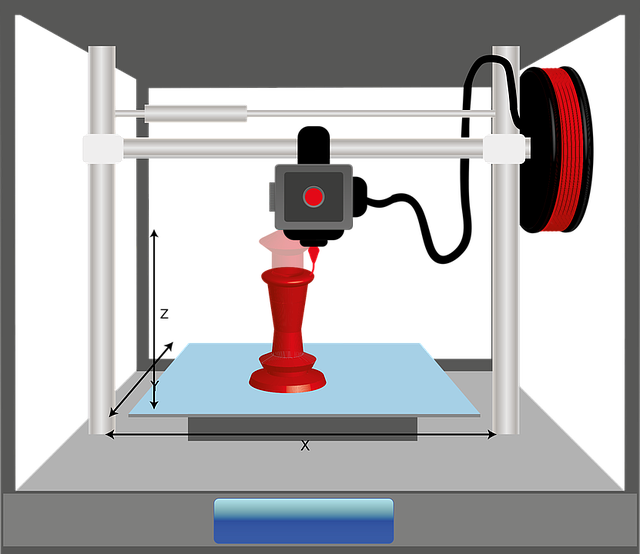 However, a small hitch for companies who supply 3D printers was highlighted this week. A company that many had hope in called Makerbot, who actually built 3D printers, announced that they would stop production and outsource the making of printers to another company named Jabil.
However, a small hitch for companies who supply 3D printers was highlighted this week. A company that many had hope in called Makerbot, who actually built 3D printers, announced that they would stop production and outsource the making of printers to another company named Jabil.
The announcement blog post written by the CEO of Makerbot, Jonathan Jaglom, stated: "To achieve our long-term goals, we also need to be able to navigate the volatility of an emerging market. Working with Jabil will position us to better manage rapid change in our industry and reduce our manufacturing costs to compete more effectively in a global marketplace."
The CEO further confirmed that the 3D printing market "has been very volatile". Strange, considering the Wohlers Report 2016 said that the 3D printing industry grew by 25.9%, and assured the public that the industry is not in decline.
Makerbot was initially the company that gave hope to the industry and said that your regular joe would be printing a plethora of items in the luxury of his/her own home. Then the company retrenched 20% of its staff, and it has struggled to surface due to the amount of printers being ordered since then.
In other 3D printing news, a Chinese startup company is releasing a material known as Polysmooth. Allegedly, the new material can be used by any third party printer to ensure that whatever is printed has no rough edges or any other issues. The idea is to refine the process due to current 3D printing practices churning out objects which are rough to the touch. The company says that their new material 'self-polishes' the materials when put it into the printer. Check out their: Kickstarter
- Details
- Written by: Steve Mackay
- Category: Blog - Steve Mackay
As engineering professionals, we are surely closer to the driverless car than the paperless toilet.
An old jibe amongst pilots concerns what you need to fly a modern plane. The answer is a computer, a pilot and a dog. The computer flies the plane; the pilot’s sole task is to feed the dog and the dog’s job is to bite the pilot if he tries to touch anything.
Dear Colleagues
As engineering professionals, we are surely closer to the driverless car than the paperless toilet.
An old jibe amongst pilots concerns what you need to fly a modern plane. The answer is a computer, a pilot and a dog. The computer flies the plane; the pilot’s sole task is to feed the dog and the dog’s job is to bite the pilot if he tries to touch anything. Well, according to cynical pilots. And indeed; today most long haul flights are handled by auto pilot. Although, I am a little twitchy about the A330 which broke up over the Atlantic; seemingly the computers (and presumably pilots) were bamboozled by erroneous speed readings due to iced up pitot tubes. Most instrument engineers will sigh when they read this; as they would have been exposed to the same situation many times over, in plants of every description.
Interestingly enough autopilots have been around since 1912. Many of the modern autopilots still use the old Intel 80386 processor from 25 years ago (remember DOS and no odd operating system crashes). Trains are also highly automated (they only move backwards and forwards at the right speed and watch for red lights) with no drivers and people are comfortable with this. You only need to look at the London Dockyard trains/ various world city monorails and Malaysian Airport to see this in evidence. Although what mystifies me is the continual series of accidents with driver led-trains – for example, one driving into into the back of another or collisions at point crossings.
But the big prize to really automate the car has two obstacles – technical (obviously) and a harder one – psychological. Roads are enormously complex places compared to railways and planes with relatively empty skies (and massively human controlled airports when they want to land).
Already the car is a massively digital and computerised animal with over 200 on-board sensors with a high end one possessing over 70 microprocessors (and even the lowly Tata Nano having a dozen). Satnav is a key part of many drivers’ daily lives allowing them to get around cheaply with satellite navigation in strange locations. Internet connectivity is achieved with a smart phone allowing all sorts of interesting information to be gathered (such as real time traffic information and indeed even the location of speed traps).
As we all know from personal experience; a driverless car has to deal with a myriad of issues – unexpected objects rolling into the road (a ball); giving way to emergency vehicles; other accidents; drunken pedestrians; sudden road diversions. But the payback will be enormous – a machine can react far quicker than a human to a hazardous situation. And if the cars on the road can “chat” to each other via wireless; they could minimise traffic jams and dangerous overtaking.
As far back as 1994, a driverless car drove through the manic traffic infested streets of Paris at speeds up to 120km/h for over 1000 kms. So the technology is almost here. Several cars (Mercedes and Volvo) now will brake automatically if they detect an imminent collision. And the Lexus (amongst others) does its own parallel parking with panache.
What should we do about this?
- Read and talk to as many of your peers as much as possible
- See the business opportunities unfolding here – whether you are mechanical/electrical/IT or electronically oriented, with millions of cars on the road, the re-engineering required is wide ranging and huge opportunities are evident
- Apply these new proven automobile technologies to your next project
- Ensure that whatever is done; that all cars and support gear is super safe
- Think of the Law of Unintended consequences and figure out unexpected results which may need to be dealt with – either from an opportunity or safety point of view
Hopefully the humorous remark about the safety in cars, by Dudley Moore is not true: The best car safety device is a rear-view mirror with a cop in it.
Thanks to the Economist for references in writing this.
Yours in engineering learning
Steve
Mackay’s Musings – 26th April’16 #597
780, 293 readers – www.eit.edu.au/cms/news/blog-steve-mackay
- Details
- Written by: Quintus Potgieter
- Category: Developments
Engineers and birds have an odd relationship. There is a recent fascination with what birds could teach us about building new aircraft or drones for that matter. Stanford University has joined the craze and has built a wind tunnel for birds and drones to test aerodynamics and how birds react to turbulence.
Dan Quinn, a postdoctoral research fellow says, "Birds are masters of maneuverability in ways that we are only beginning to understand."
 "Birds can dramatically change the shape of their wings almost instantly and respond in that way very quickly. Flying in turbulence, avoiding obstacles and also flying very effectively over long distances," says David Lentink, mechanical engineering professor at Stanford.
"Birds can dramatically change the shape of their wings almost instantly and respond in that way very quickly. Flying in turbulence, avoiding obstacles and also flying very effectively over long distances," says David Lentink, mechanical engineering professor at Stanford.
The wind tunnel that the team of researchers built can alter turbulence and will cause birds to avoid and dodge the winds in the tunnel. This would allow the researchers to understand how they do this and perhaps publish the findings which could lead to drones dodging turbulence in expert ways in the future, inspired by nature.
The wind tunnel will push out gusts of winds up to 15 metres per second at maximum. Then a host of windows around the tunnel allow the researchers to peek inside the wind tunnel but they have also set up high-speed cameras so that they can capture slow motion video. A fluoroscope is used to observe the skeletal movements that are occurring in birds during flight in the wind tunnel. The fluoroscope is basically an X-ray machine that will show the bird in real time.
"The tunnel is designed to be super low turbulence but we also want to study how birds fly in turbulence and how we design vehicles that are more stable in turbulence. We can actually not only control how strong the turbulence is but where the turbulence is inside the tunnel," said Quinn.
Similarly, UCLA and its engineers are also studying bird flight to eventually try and turn into aircraft design.
Daniel Inman, a professor of aerospace at the University of Michigan, is working with the team over at UCLA, who have been given a $6 million grant to observe bird flight and invent materials that are flexible enough to react to wind like bird wings do. He said: "With new materials, advanced sensing and control techniques, and inventive methods for observing birds in flight, our team will begin to bring avian efficiency and agility to aircraft."
- Details
- Written by: Quintus Potgieter
- Category: Education
Engineers are obsessed with reducing computing down to the size of one solitary chip these days. The smallest of transistors can operate at gigahertz far greater than computing speeds. The buzzword around engineering is 'nanoscale'. Everything is smaller and more efficient, engineers are always looking to minimize the amount of space something takes up. However, the smaller the object, the more 'nanoscale' some of the materials have to be to accommodate the size.
 Researchers at Stanford University have investigated phase-changing nanoparticles to observe how their shape changes due to the arrangement of atoms within the crystals inside. They relate this to the charging and discharging of energy storage systems. This research would be valuable to any companies currently working with lithium-ion, hoping to release energy cells to the public.
Researchers at Stanford University have investigated phase-changing nanoparticles to observe how their shape changes due to the arrangement of atoms within the crystals inside. They relate this to the charging and discharging of energy storage systems. This research would be valuable to any companies currently working with lithium-ion, hoping to release energy cells to the public.
The work published in the Nature Materials journal was named Reconstructing solute-induced phase transformations within the individual nanocrystals.
Nanoparticles within energy storage systems enable the systems to charge faster and last longer. This process inspired the researchers to look into how deformed the crystals within the nanoparticles become during this process. They rationalize that if they can discover a breakthrough, they could improve charging and discharging and lifespan of batteries.
The abstract said:
Strain and defects can significiantly impact the performance of functional nanomaterials. This effect is well expemplified by energy storage systems, in which structural changes such as volume expansion and defect generation govern the phase transformations associated with charging and discharging.
The rational design of next-generation storage materials therefore depends cruciailly on understanding the correlation between the structure of individual nanoparticles and their solute uptake and release.
Jennifer Dione is an assistant professor of materials science and engineering at Stanford and worked on the project. They took lithium-ion batteries and tested the reactions of individual particles during charging. Using an environmental transmission electron microscope, they were able to observe the nanoparticles and at what hydrogen pressures they were reacting under. They found that the structure of a nanoparticle does have an effect on how an energy storage unit would perform. The difference is how hydrogen is absorbed in the center of a nanoparticle, which causes performance issues.
Tarun Narayan, a lead co-author of the study, told Stanford News: "This instrument is one of only a handful of its kind and allows us to study materials in their working environment.
Andrea Baldi, a postdoctoral co-author and faculty member of the Dutch Institute for Fundamental Energy Research (DIFFER) said: "Each technique offers different information that can be combined to gain a complete, multi-dimensional understanding of the system."
Robert Sinclair, a professor of materials science and engineering who also wrote alongside colleagues at Stanford said: "We could not have envisaged making in situ observations like this at the atomic level even a few year ago, and so what the teams had demonstrated and achieved is remarkable in the materials imaging field."
Dionne concluding by saying: "With this ability to peer inside nanoparticles during their operation, we can help design champion materials for next-generation energy storage devices."
- Details
- Written by: Quintus Potgieter
- Category: Industry
Civil engineers would be pleased to know an update for AutoCAD Civil 3D will be available to them soon. The software gives engineers the ability to give a virtual showcase of what a certain addition to a town might look like. The new AutoCAD Civil 3D 2017 is an updated version of Autocad boasting new additions that will assist civil engineering and infrastructure designs.
The new version will team up with InfraWorks 360 to keep tabs on work progress in engineering teams. This plugin allows InfraWorks infrastructure objects to be imported into the program.
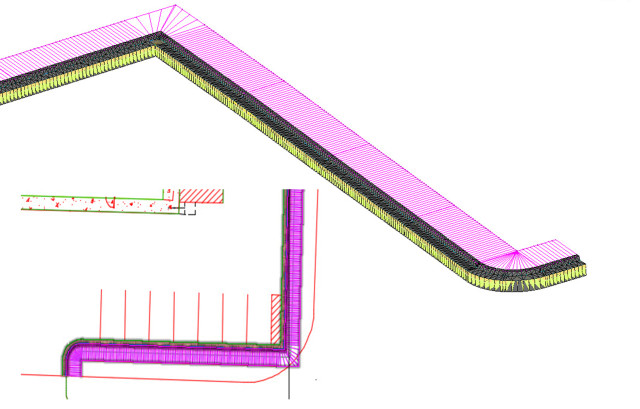
Corridor design has also been reupholstered into the new version of the software. Greg Dixie, an application specialist for Excitech Ltd, previewed the new corridor design abilities in a YouTube video. He said: "You can make short-cut corridor models. I can import my corridor models into the program and it looks slightly different than it did before." Another addition is the extraction of corridor properties, which is also something new in the 2017 iteration of the program.
According to Engineering.com, pipe design is also an updated feature. The program includes a larger library of "pressure pipe content" for HDPE, PVC and steel pipes.
Theo Angelopoulos, director of infrastructure industry business strategy and marketing at Autodesk said: "Today's civil infrastructure professionals face huge challenges to build new or retrofit our communities' infrastructure for transportation, land use, water, and energy in ways that are more economical, practical, resilient and attractive." They are confident that the program will assist civil engineers in creating the best possible virtual representations of how to engineer something that is of worth to the community and that can be built according to the digital guidelines that the software provides.
What program is essential to your engineering career? Let us know in the comments section.
- Details
- Written by: Quintus Potgieter
- Category: Industry
German watchdogs combing through carmakers' technology to uncover emissions test cheating software have discovered that automobile manufacturers are using other methods that lead to lower emission counts. These revelations from German Transport Minister, Alexander Dobrindt. Allegedly, the carmakers "tweak engine performance" which results in more emissions but less data on those emissions when the software is checked.
According to Reuters, Germany's KBA Federal Motor Transport Authority tested 53 vehicles to find out if carmakers followed the same practices that Volkswagen did, in order to manipulate emissions testing. The results of the tests found that VW was the only manufacturer that made use of cheating software, but, the other manufacturers dabbled in what is being called a 'thermal window'.
 Due to the 'thermal windows' findings, the German government is set to recall 630,000 vehicles. Government officials talking to the media said: "The recall is aimed to ensure that a legal loophole allowing manufacturers to throttle back emissions treatment systems under certain circumstances is tightened to make sure lower levels of pollution going forward."
Due to the 'thermal windows' findings, the German government is set to recall 630,000 vehicles. Government officials talking to the media said: "The recall is aimed to ensure that a legal loophole allowing manufacturers to throttle back emissions treatment systems under certain circumstances is tightened to make sure lower levels of pollution going forward."
The 'thermal window' approach - most probably coaxed up by very clever automotive engineers - reportedly works around the process of condensation build up in catalytic converters and the throttling back emission management systems to protect the engine from that build up.
Switching off or throttling back emissions treatment systems, however, has the added benefit of improving engine performance and stretching the interval between refilling vehicles with urea, a subtance needed to extract NOx from exhaust fumes
- Markus Wacket, Reuters News Agency
The German government is trying to cut down on the amount of nitrogen oxide (NOx) that is polluting the air and that is part and parcel as to why they are recalling 630,000 vehicles so that this work-around 'thermal window' solution can be investigated.
- Details
- Written by: Quintus Potgieter
- Category: Industry
Brexit, or rather known as the possible British Exit of the European Union, could damage engineering in a big way, say industry experts. Engineering UK has heard that a vote for Brexit could lead to a slump in "vital research funding" and add to a shortage of skilled engineering workers in Britain.
According to The Telegraph, companies such as Rolls-Royce, Airbus and Caterpillar are behind the vote not to leave the European Union due to the companies saying it will cause "unknown and unquantifiable transition risks."
Naomi Climer, president of the Institution of Engineering and Technology said: "British engineering is deeply integrated with global markets and companies. If Britain votes to the leave the EU, the period of uncertainty about the terms on which access to these markets would be granted would a threat to the sector. The interests of engineering and technology may be best served by the UK remaining within the EU, and we are calling for urgent discussion on the impact of an exit decision on a sector that is so vital to our country's economy."
 The vote has been set for the 23rd of June, 2016. The companies who have encouraged a 'NO' vote collectively employ 100,000 skilled engineering professionals. The companies maintain that job losses would occur on the back of the decision to leave the European Union. In the letter that the companies drafted together, they say: "While the UK could tackle this problem by introducing a fast-track visa process for engineers and technologists, it is unclear how this would sit alongside the tighter border controls anticipated following an exit from the EU."
The vote has been set for the 23rd of June, 2016. The companies who have encouraged a 'NO' vote collectively employ 100,000 skilled engineering professionals. The companies maintain that job losses would occur on the back of the decision to leave the European Union. In the letter that the companies drafted together, they say: "While the UK could tackle this problem by introducing a fast-track visa process for engineers and technologists, it is unclear how this would sit alongside the tighter border controls anticipated following an exit from the EU."
The Mayor of London, Boris Johnson, is adamant that consideration must be made for the scenario of a British exit. He told SkyNews: "We asked for very simple things, like people coming here should have a job offer before they arrive or if they can't get a job within six months then they should go back. Those very simple ideas."
The worry is that skilled engineers will not be able to make their way into Britain to address an engineering shortage due to the European Union exit which would tighten up border control and make it harder for those international professionals to make it into the country.
- Details
- Written by: Quintus Potgieter
- Category: Education
The delicate balance between engineering education and work experience has proven to be a conundrum in multiple engineering industries, where jobs are not being found. What engineering education should students then be getting to secure their engineering job in the industry? That is the question a lot of students have been asking, due to not finding employment in the industries they studied for.
Shady Hashem, a student from Egypt, travelled to Canada to study at the Halifax Dalhousie University and then tried to find a job at the University of Calgary. He admitted to applying to over 50 jobs in Canada but hasn't found success in employment thus far.
Hashem said: "I talk to a lot of engineers, and the expected time to get a job is between six months and a year. I'm applying everywhere, but I haven't heard back from anybody yet, not even an email that says: 'Sorry this position has been filled.' That's very frustrating."
Hashem is looking for a job in the oil industry, however, the Conference Board of Canda released a report saying that the demand for employment is double the national average of the last 17 years in civil, mechanical and computer engineering. Thus, the lack of jobs might only be in selective industries.
Colleen Bangs is the manager of career services at the University of Calgary and said that one-third of the university's 659 engineering students have not been employed since graduating.
Bangs said: "Something I've noticed, particularly in this last semester, is that there's a bit of an impending feeling of doom."
The report as published by CTVNews also states, that the University of Alberta has revealed that 70 percent of the 1,300 engineering students have in fact found employment in engineering industries. These revelations lead critics to believe that the situation is not as bad as it seems. Could it be that the University of Calgary isn't as respected as other universities are? Is their engineering education good enough?
In South Africa, a known civil engineering hiring slump has occurred since the end of the Fifa World Cup in 2010. The Sunday Times recently reported on a civil engineering graduate named Mfuneko Nomvalo, who has returned home after studying due to not finding employment.
Nomvalo told the Sunday Times: "It's been five years since I graduated, but finding work has been the hardest thing for me. I thought I had left and progressed in life. I've worked 18 months on contract on local construction jobs and it's not what I thought it would be like..."
 How does a future engineering professional find the right education institution fit for them? Finding a university that will guarantee a hire in the industry, is a tall order it seems. What needs to happen in engineering education to produce more skilled, work-ready engineers?
How does a future engineering professional find the right education institution fit for them? Finding a university that will guarantee a hire in the industry, is a tall order it seems. What needs to happen in engineering education to produce more skilled, work-ready engineers?
The Dean of Engineering at the Engineering Institute of Technology, Steve Mackay, addresses the topic of engineering education that works in the thirteenth episode of the Engineering News Network.
Mackay said: "We really need to focus on the basics, which is, having outstanding industry experienced instructors involved with the students. That's what really matters...people who have industry experience."
Regardless of the university, Mackay seems to believe that as long as engineers equip themselves with the necessary skills, they would be able to find employment in the industry. He believes:
The typical things you want to teach the students are things such as being entrepreneurial, creativity, being able to think outside the box, working in teams - the instructor and the students - forget about the good old professor on the stage it's actually the professor and the lecturers and instructors all working together on the project. There's no more guru that you have to listen to quietly, it's actually all about dynamic teamwork.
Other skills that are required are things like project management, which often as engineers and technologists we are involved with in our day to day jobs.
Communication skills ; reading and writing. Engineers need to jack up their communication skills.
- Details
- Written by: Quintus Potgieter
- Category: Industry
Imagine having your own compact aircraft that you could utilize at any point. Or imagine calling an UberAir to come and pick you up and transport you across town. Those days could be upon us with the introduction of an 18-rotor electric aircraft named the Volocopter. An aircraft that looks like something out of a kid's party packet, the rotors are placed around a network of beams that are connected to a large round beam. The engineers at e-volo who are behind the Volocopter are boasting about the fact that it does not release any carbon emissions into the atmosphere.
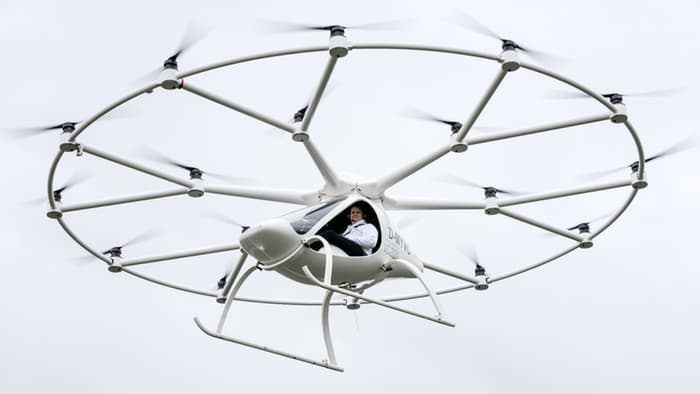
The entire thing weighs 992 lbs at take-off and has nine batteries powering the motors that can propel the aircraft to achieve 62 miles per hour in the air.
Alexander Zosel, the managing director of e-volo (the company that designed and built the aircraft), got to take the Volocopter out on its first flight. After it, he said: "The flight was totally awesome, the machine was absolutely reliable. The Volocopter immediately converted every movement I made with the joystick. The special thing with the Volocopter is that it is actually an aircraft that flies by itself. I can take my hands off the joystick, it stays in the air as if nailed there."
The team got the go-ahead to operate the vehicle from the German aviation authorities in February of 2016. according to Engineering.com. The team is also interested in selling the Volocopter commercially by 2018.
The future of manned personal vehicle mobility seems to be drawing closer due to this seemingly safe Volocopter solution. For the journey from design to the first manned flight, check the video below.
- Details
- Written by: Quintus Potgieter
- Category: Education
Engineers have some of the most sought after skills in the world today. You could say they are necessary, most influential actors in our global society. Their contributions do not go undervalued seeing as though they place in the top 5 highest paying jobs of 2016.
However, engineering experts themselves admit that they are missing some necessary skills that their tertiary education and work experience didn't prepare them for.
Professor Lawrence Susskind, a professor at MIT in the Urban Planning sector and the head of environmental policy and planning group, wrote an article entitled The Key to Success: Negotiating 101 for Engineers, published by TheEngineer.
He writes, "It's one thing to come up with an innovative idea; it's another to take that idea to the market." Susskind says there is a typical engineering logic that gets in the way of marketing and maintains that engineers repeat the same mistakes every time they negotiate with potential investors and partners.
Susskind's list of how to avoid the mistakes of bad negotiation is as follows:
- Ego and emotion: When negotiations begin, it's vital to leave emotions out of it.
- Dealing with Uncertainty: When entering a negotation, it's key for inventors and innovators to be ready with contingent proposals that will minimse the risk to their investors.
- Handling technical complexity: It may be necessary for both sides to engage in joint fact finding to ensure that they have shared understanding grounded in mutually acceptable data.
- Building Trust and Working Relationships: To maintain good working relationships, sucessful negotiators know how to say what they mean and mean what they say.
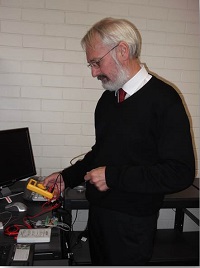 Negotiation is not the only skill that engineers should add to their arsenal of skills, it seems. The Dean of Engineering at the Engineering Institute of Technology (EIT), Steve Mackay, also highlighted what skills - as basic as they might be - engineers could become proficient in to ensure engineering success.
Negotiation is not the only skill that engineers should add to their arsenal of skills, it seems. The Dean of Engineering at the Engineering Institute of Technology (EIT), Steve Mackay, also highlighted what skills - as basic as they might be - engineers could become proficient in to ensure engineering success.
In the sixteenth episode of Mackay's YouTube series, Engineering News Network (ENN), he underlines some key non-engineering skills engineers can quite easily pick up. Mackay speaks of a touch-typing course he took forty-two years ago, that was one of the most fantastic skills he ever picked up. The other skills he encourages, are the following:
- Time management: "Someone mentioned to me the other day that time is probably the greatest thing we don't have much of. Money we can get, time we cant.
- Basic finance and bookkeeping: "It's horrific how many engineers are in their 50s and 60s and they have no money because they didn't do any management of their finances when they were in their 20s
- How to negotiate effectively: "The ability to negotiate for anything you want to buy. A car, an item for your house or your factory or your shop.
- Write simply and decisively: Don't use big words when you write reports, make it simple and readable
- Presentations: How to present powerfully and simply. Don't use powerpoints with glitzy animations. Try to avoid being lost in powerpoint
- Capture with photographs: Taking photographs and looking at basic skills with lighting and framing...very important.
- Networking: All the time, all day, everyday. Keep up with what's going on in the job market, what's going on everywhere. Networking will keep you employed for the rest of your life.
Networking and negotiating are key areas that seem to be an area of concern to engineers around the world and is something that experts are encouraging engineers to perfect. Even the most basic of skills that could have gone unlearned during high school or tertiary education expansion can be beneficial to engineers, according to the engineering opinion makers.
- Details
- Written by: Quintus Potgieter
- Category: Developments
The Nevada desert seems to be the latest hub of energy generation. Tesla has built their new Gigafactory dedicated to the production of lithium-ion batteries and Crescent Dunes, a solar power facility, supplies energy to approximately 75,000 homes. It is both beautiful to look at and revolutionary for energy generation in the world today.
The company behind the behemoth facility is SolarReserve, that employs engineers around the clock to maintain the facility. According to the company's website they employ around 4,300 people with the running of the facility. The biggest draw card that highlights this facility's usefulness is that it can even store energy during overcast weather and even operate at night, which makes the plant invaluable.
 SolarReserve's CEO, Kevin Smith, told TIME magazine, "This is the first utility-scale facility in the world with this technology. Our technology can truly replace conventional generation."
SolarReserve's CEO, Kevin Smith, told TIME magazine, "This is the first utility-scale facility in the world with this technology. Our technology can truly replace conventional generation."
Other solar facilities suffer under weather conditions, slowing down the storing and producing of energy due to the panels requiring sun.
The Crescent Dune plant uses its mirrors to reflect light into the central tower, which then heats up the liquid salt that stores the heat and turning it into a battery. TIME confirms that the plant produces "zero tons" of carbon.
Professor Jay Apt of the Carnegie Mellon Electricity Industry Center, said: "We're all hoping that, just like photovoltaic power, we'll start getting on the downward slope of the learning curve. If you crank a whole lot of those units, you'll learn to do it better."
The company is hoping that the facility can set an example for the rest of the world, and perhaps the world will follow suit and set up their own facilities that utilize molten salt power generation.
- Details
- Written by: Quintus Potgieter
- Category: Industry
Biomedical engineers in Singapore are using what would usually be discarded to facilitate a renewable source of minimizing the amount of food waste that occurs. According to StraitTimes, 66139lbs of soya bean residue gets sent to the dump every year.
So, the biomedical engineers at Nanyang Technical University (NTU) went to work and used residue from soya milk and tofu production and utilized it to grow yeast. The team is confident it will minimize costs on the cultivating of yeast in Singapore.
Professor William Chen who works in the School of Chemical and Biomedical Engineering at NTU, and lead the research, said: "Our data shows that the culture medium we developed grows baker's yeast as fast as commercial media. So the impact is potentially wide-ranging."
An assistant of the project, Dr. Jaslyn Lee, said they take the residue (or as they call it 'okara') and add it to "food-grade" microorganism. An enzyme is produced and a breakdown of the residue occurs into a "wool-like product."
The process reportedly takes five days.
The engineers say a liter will cost $3 whereas yeast produced from crop plants such as potato and wheat cost $11-$36.
Ms. Loong Mann Na, director of the Food Innovation and Resource Center at Singapore Polytechnic, said: "The method of production is deemed to be cleaner, more efficient and natural."
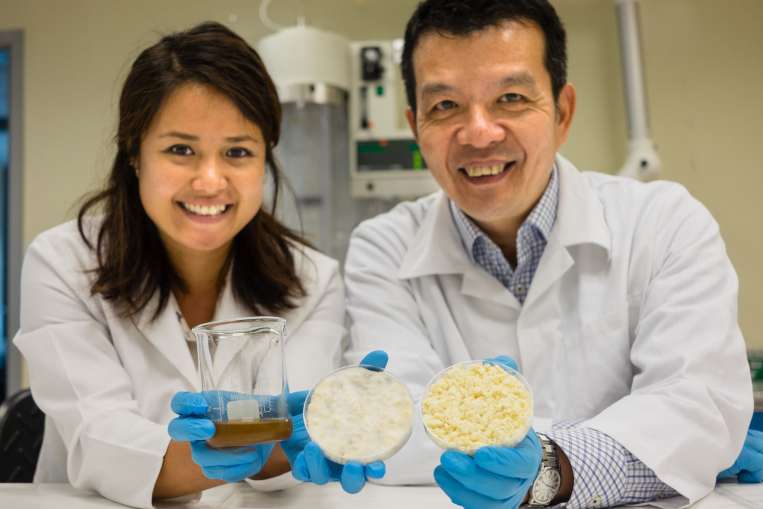
- Details
- Written by: Quintus Potgieter
- Category: Industry
Australia's forward thinking, proactive, stance when it comes to energy storage continues to be strengthened by government's urgency to get more and more people balancing out the power grid by using home batteries.
The Australian government has awarded 200 houses with discounted Tesla Powerwall batteries storage units in Canberra. The idea is that the houses would use the battery when the grid is under pressure so that they can alleviate some of the energy dependency. The Powerwall utilizes solar panels to charge the battery up and then stores the energy, ready for use, ready to power homes.
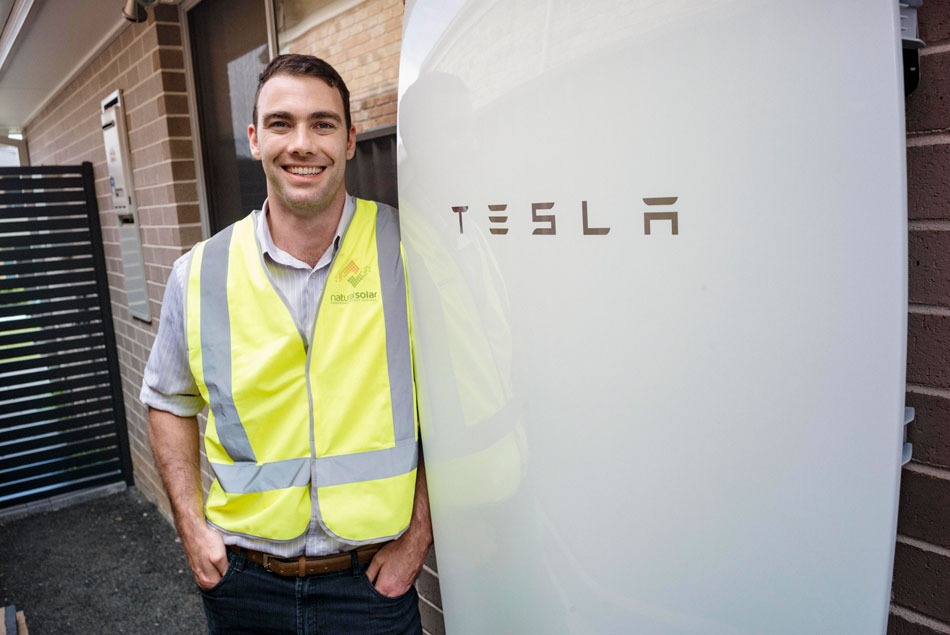
According to Mashable, three Australian companies have also been given funds to jumpstart the process of getting houses less reliant on the grid. The companies are SolarHub, ActewAGL Retail, and ITP Renewables. They receive A$200,000 each to take part in the Next Generation Energy Storage Pilot .
The Australian Capital Territory (ACT) minister for the environment, Simon Corbell, said: "By committing to support battery storage in this early stage of its entry into the market we want to open the door for the ACT to lead research into high-penetration renewables and attract international and national companies and research leaders into this developing space."

However, there is trouble in paradise for customers who have already tested the Powerwall out. A company named Genentech Media has reportedly heard complaints from a German Powerwall owner that the Powerwall is too loud. The man measured his decibels the Powerwall emitted and found it to be more than 80 decibels. The man says the noise was audible in his whole house.
Tesla sent a technician out to see what the problem was. The customer said: "I was told that the power consumption of the ventilation or cooling system was reduced to 15 percent of its original value. After this update, the noise was not there anymore."
Even though the problem was solved, Logan Goldie-Scot, head of energy storage analysis at Bloomberg New Energy Finance spoke to GTM and said: "I've heard they're loud enough to want to relegate to a garage or outside. Not for communal areas, certainly. I haven't been able to substantiate this, though."
If the Powerwalll continues to hum uncontrollably, it could put a strain on orders of the first batch that are being released by Tesla, but for right now it seems like an issue that can be easily rectified by either a technician or by relocating the Powerwall itself.
- Details
- Written by: Quintus Potgieter
- Category: Education
A new string of engineering graduates will be looking for jobs in the industry very soon. Every year engineering graduates are produced and ready to bring their youthful style and their expertise into a company. In South Africa, the University of Pretoria said that they account for 27 percent of engineering graduates in the country. Recently, the World Economic Forum said the most engineering students would be coming out of Russia, but didn't account for the number of graduates in China and India. All in all, the number of engineers getting their qualifications would mean there is no shortage of engineering talent. However, the name of your university can only get you that far. Sometimes in order to get an engineering job you have to go the extra mile.
 The next step for graduates is getting that desirable job, right? But the first step is polishing the curriculum vitae and getting it out there so you can appear to be the best candidate for an engineering job. Some experts in the engineering field have weighed in and given their two cents as to how to build that attractive looking CV.
The next step for graduates is getting that desirable job, right? But the first step is polishing the curriculum vitae and getting it out there so you can appear to be the best candidate for an engineering job. Some experts in the engineering field have weighed in and given their two cents as to how to build that attractive looking CV.
The Dean of Engineering at the Engineering Institute of Technology (EIT), Steve Mackay, talks about constructing an engineering résumé in the fifteenth episode of the Engineering News Network. Here is a summary with some quotes from the Dean that might strengthen your curriculum vitae:
1. Focus on the job: "Most people think they can use a generic résumé because they are applying for lots of jobs but that is a sure fire path to destruction."
2. Make it simple: "Use simple English, lay it out simply, you don't have to address it to the village idiot but by the same token make it simple and easy and reasonable."
3. Grammar and spelling must be 100%: "Try and look at the English and the spelling to make sure it reads well."
4. Avoid excessive information: "The twenty page CV is long since gone. Employers don't have time to read."
5. Lots of white space and include an executive summary: Mackay says the executive summary should be included because it would state why you think you're the right pick for the job. "Try and be specific, give real employers names...who actually exist...plus your time with them and the job you had and the reason why you left," he said." He further says that you should try and avoid the 'job hopping' approach where your CV shows that you've only spent a few months at a place of employment because that doesn't look good at all.
6. Search for jobs you really want: "It's pointless going for a higher paying job if you hate it. Try and focus on the jobs you are looking for, make sure it's aligned with you."
7. Business strengths: Mackay says it should include 'business wins' from previous employment. Stating what kind of successes you achieved.
8. Experience: "No matter how many qualifications you've got, if you don't have the experience that matches up with the qualifications, you've got a pretty tough job selling yourself. Experience plus qualifications...great match."
Engineering.com also penned a list of things to look out for, which should equip you with the necessary skills to create a good CV for engineering employers:
- Know the target company
- Think outside the box
- If you don't ask, you don't get
- Give the employer a compelling reason to read on
If you seem to find yourself absolutely lost in the formatting stage of preparing a curriculum vitae, there are options on the internet that you can explore. For example, Google has templates available, that are crowdsourced templates that can make CVs look professional and readable so that you could perhaps secure that job. You can find them here: Résumé Templates.
The rest is all up to you. Good luck on finding a job and congratulations if you have just graduated with an engineering degree.
- Details
- Written by: Quintus Potgieter
- Category: Developments
At the University of Central Florida, a junior electrical engineering major has invented something that would alert a car owner when their wheels have been tampered with or in the worst case scenario, stolen. According to Central Flordia Future, there were five instances of vehicle tire theft or tire tampering since 2015.
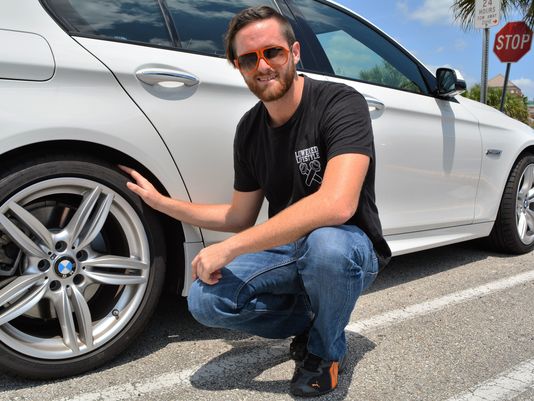
Matt White, the engineer behind the device, said: "I noticed in the beginning, ending and kind of in the middle of every semester some wheels would go missing here on campus from cars. I thought to myself 'What solution, what would be useful for students, for young professionals, for people that park outside with nice wheels or even stock wheel and brand new tires?"
The idea is a tracking device that utilizes Google Maps to track down the stolen wheels' location in real time. He coded an app that would show a user when the tires were stolen and how far away they are from their immediate location. White also wants to try and get the police involved so that the app can send out an alert to the policeman to alert them that tire theft is occurring.
"Having something such as a tire pressure monitor-looking device...securely strapped into the wheel and actually be able to tell and track where the wheel is up to a certain number of hours, of course, because of battery life. It could be one day or five days depending on how often the coordinates are pulled."
He has given the device a name: TrakSURE.
What White doesn't realize is how big tire theft is around the world, especially in countries like South Africa. His invention could revolutionize tire theft statistics if he took it international.
The UCF College of Engineering & Computer Science tries to assist its innovators at bringing products to the market and will try and get White's product into the market.
White's mentor, Oscar Rodriguez, said: "...there seems to be a real need in the marketplace, and yet, what I find interesting, is that after doing a lot of searching, there doesn't seem to be a solution that's already out there. So it's kind of ripe. The demand is there."
- Details
- Written by: Quintus Potgieter
- Category: Industry
Marking almost a week since the earthquakes in Japan and Ecuador, engineers are still scratching their heads at the randomness of the quakes. Seismologists are also trying to debunk the fact that the earthquakes could be linked to some unknown seismic activity.
Jonathan Stewart, a professor of civil and environmental engineering in the UCLA Henery Samueli School of Engineering and Applied Science, said: "The occurrence of earthquakes in time is more or less a random process."

Mark Benthien, director of outreach for the Southern California Earthquake Centre, agreed, saying: "There's absolutely no link. There are times when large earthquakes do trigger an earthquake somewhere else. The Japan earthquake was certainly not large enough to trigger an earthquake in Ecuador."
Experts are now warning that Thailand could be in danger as well due to resting on "hidden fault lines". A structural engineering expert from the Asia Institute of Technology, speaking to Bangkokpost, said: "The question is when -- we won't know until it comes."
There is also renewed pressure in Japan to pressure the government to review building law for buildings less than three storeys, to ensure they are earthquake-proof.
The insurance and reinsurance industry has unsurprisingly taken a knock after the earthquakes in Japan as well. An estimate released by AIR Worldwide projected losses of $1.7 billion to $2.9 billion. The company is the leader in catastrophe risk modelling software and consulting services.
Dr Tao Lai, a senior principal engineer at AIR Worldwide, said: "Kyushu Island lies on the overriding plate above the Philippine subducting plate to the west of the Nankai subduction zone. The region is exposed to subduction interface, intraslab, and shallow crustal earthquakes."
- Details
- Written by: Quintus Potgieter
- Category: Developments
Canadian researchers at the University of Toronto are showing off a new method of renewable energy storage that utilizes the laws of photosynthesis as it happens in nature. Mimicking the process of photosynthesis will allegedly lead to a sustainable, renewable answer to energy storage on a grand scale.
The University of Toronto's Faculty of Applied Science and Engineering is behind this and has created a device to put their hypothesis to work. The device splits water into hydrogen and oxygen - like plants do - leading to what the team says is the most efficient way of storing energy in a chemical form.
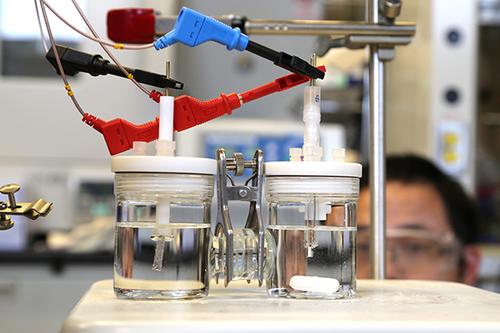
Edward Sargent, a professor in the Department of Electrical and Computer Engineering, spoke to DesignNews, and said: "The research identifies a new path to split water using electricity from renewable sources, such as solar and wind. The improvement in this new catalyst is that it significantly reduces the energy required to split water at a high rate -- a high intensity of fuel electrosynthesis."
The team thinks the device could change the way energy produced by solar and wind is stored. Lithium-ion batteries are used to store and the team is sure that their invention can compliment the current hunger for renewable energy storage.
Sargent said: "A kilowatt hour of electrical power could be stored with less total loss -- i.e. it could come closer to being a stored kilowatt hour. This would in turn improve the cost-effectiveness of storage, since people are generally willing to pay a certain rate for a retrieved kilowatt hour, so the energy storage round-trip efficient contributes directly to cost-effectiveness."
- Details
- Written by: Quintus Potgieter
- Category: Developments
Engineers at The University of Wisconsin-Madison are into precision. How can you tell? They've created the slimmest, most flexible, silicon transistor ever. At the helm of the project is Zhenqiang Ma, who has shown off the transistor that works at 38 gigahertz, but could theoretically achieve 110 gigahertz. This means it is capable of computing speeds above smartphones.
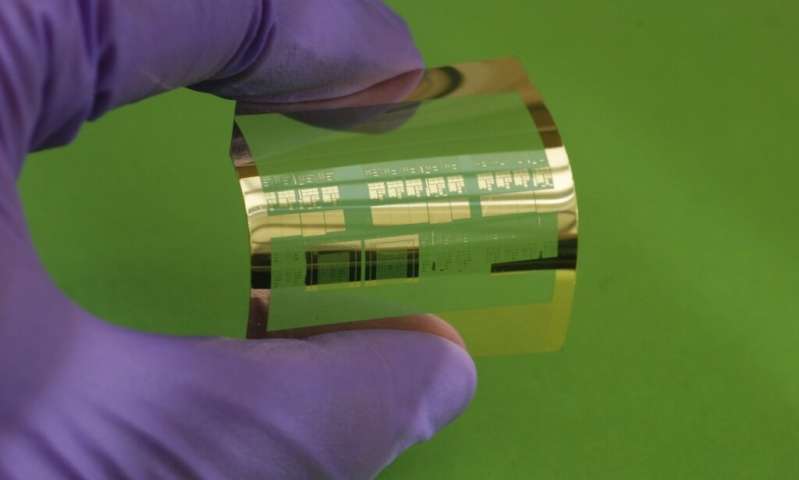
The findings were reported in the Scientific Reports journal. The slim, plastic transistor will have uncountable benefits for wearable technologies that are becoming more popular in the world today. The silicon-based transistor uses nanoscale fabrication methods at a low temperature. Then with a small knife, the patterns are cut into it based on where the manufacturer wants the circuitry to be placed.
Added to it are light-sensitive material and utilizes a technique called electron-beam lithography. According to Phys.org, the method includes a "focused beam of electrons to create shapes as narrow as 10 nanometers wide".
"Nanoimprint lithography addresses the future applications for flexible electronics. We don't want to make them the way the semiconductor industry does now. Our step, which is most critical for roll-to-roll printing, is ready," said Ma.
Ma admits that the demand for small devices with increased battery life is what is governing the way forward for flexible silicon conductors like these to exist. The engineers also say the chip will have biomedical engineering uses as well.
Ma says that they due to their flexibility "you can put them anywhere you want - on your skin, your clothes, wherever."
- Details
- Written by: Quintus Potgieter
- Category: Developments
News from the United States confirms The Senate has passed a bill that will see the country's power grid modernized and also have an effect on liquefied natural gas exports. The bill will see security measures put in place that would protect the U.S.'s power grid from weather interference and from cyber attacks. The bill further makes provisions for energy storage in wind and solar energy solutions.
 The act will be signed into law by President Barack Obama, which would make governments around the world contemplate their power grids and energy storage solutions. The bill in question is named The Energy Policy and Modernization Act and will also ensure the U.S. exports liquefied natural gas (LNG) faster than current nations such as Russia.
The act will be signed into law by President Barack Obama, which would make governments around the world contemplate their power grids and energy storage solutions. The bill in question is named The Energy Policy and Modernization Act and will also ensure the U.S. exports liquefied natural gas (LNG) faster than current nations such as Russia.
According to Reuters, the bill would see the Department of Energy issuing decisions on LNG projects within "45 days of environmental assessment", but as the bill progresses, that number will change to 30 days. Democrats are applauding the passing of the bill and looking forward to the energy future the United States can now look forward to.
Heads of industry in LNG industries are also saying that the move is a "big step forward".
- Details
- Written by: Quintus Potgieter
- Category: Developments
FANUC Corp. is a Japanese company that announced that it has created a network that will connect robots over IIoT (Industrial Internet of Things) that will set the bar for other factories of the future to aim for.
The new solution for factories by FANUC will ensure that robots stay connected to a network and work together in an industrial factory layout and will be able to present analytics data for a company's perusal.
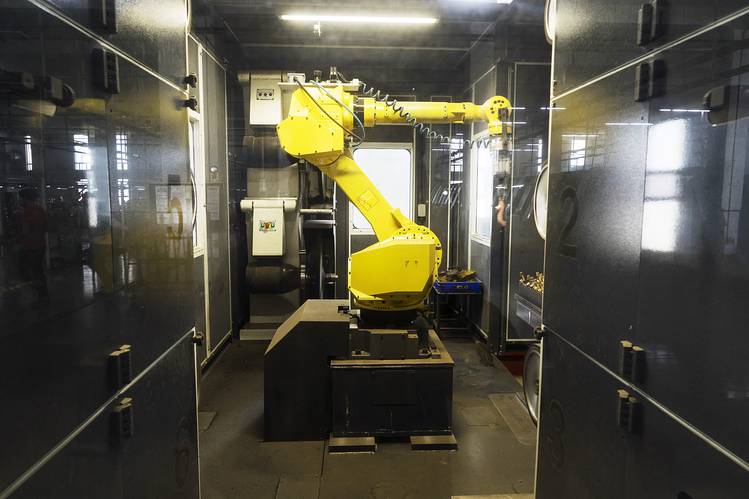
Sujeet Chang, the CTO of Rockwell Automation, told Engineering.com, "With a secure scalable compute approach to analyzing this data -- from device to the enterprise -- users can improve operations and make more informed decisions tailored to meet the needs of the organizations."
The technology would also allow apps to be installed onto the software which would further provide data for companies to observe. The idea is that robot makers will also connect their machines and tailored apps to the network, which could see some automakers connecting to the FANUC network and letting robots build vehicles in a streamlined assembly.
Chief Executive of FANUC, Yoshiharu Inaba, said: "WE believe this will be a de facto standard for factories around the world.
Toshimitsu Kawano, managing director of Beckhoff Automation Japan, spoke to the Wall Street Journal, saying, "This gives Fanuc a tremendous competitive edge because it would be the first player to provide such a service. Bringing the concept of app stores to the factory robot industry is what U.S. and German companies are all planning for, but haven't been able to do."
According to WSJ, FANUC had the biggest share in the global industrial robot market last year. The company owns factories that build Apple iPhones and manufacture Tesla Motors' cars.
Fanuc is working with Cisco, Rockwell and Preferred Networks on the new interconnected factory network system. The FIELD system they have created together consists of sensors within the machinery that observes the efficiency of a factory and then produces the data. The system will also have security measures in place that Cisco and Rockwell Automation specialize in.
Rowan Trollope, Senior Vice President of IoT and Applications at Cisco, said: "This collaboration represents a historic shift in the industry, with IoT, industrial automation, and machine learning coming together to make the factory of the future a reality. It's been talked about for years, but now it is really happening. Cisco couldn't be more thrilled to be a part of this effort, one that will be key to our positioning in other industries that want to realize the benefits of this digitization."
- Details
- Written by: Quintus Potgieter
- Category: Developments
Ding ding ding. Another fighter enters the ring. Engineers are hard at work trying to convince the decision makers that there will be something better, more efficient and safer than lithium-ion for batteries. Even though half of our smart devices these days are powered by lithium-ion. However, engineers will keep trying to find the next best thing.

Credit: Daniel A. Anderson/UC Irvine
Researchers at the University of California, Irvine have manufactured what they claim to be a 'nanowire-based' battery material that would survive "hundreds of thousands" of charges. Lithium-ion, as we know it in our smartphones, has a charge-life of around three years. If these engineers could introduce something that extended a device's life for more than three years, then it might actually be commercially viable. The team says the benefit of these batteries could stretch to the level of cars and spacecraft as well.
The project to create the battery material was in collaboration with Nanostructures for Electrical Energy Storage Energy Frontier Research Center at the University of Maryland. The result was an actual working battery that worked with 'conductive filaments' that transported electrons like a normal battery would. However, according to YahooTech, the breakthrough was the nanowires which allowed the UC team's prototype's filaments to sustain 200,000 recharging cycles. The average lithium-ion battery can do 5,000 to 7,000 battery cycles.
The breakthrough is particularly impressive because nanowires are a thousand times thinner than a single human hair. What the team did to strengthen the nanowire was to dip a gold nanowire in a manganese dioxide shell, then covered it in an electrolyte that resembled a "Plexiglas-like" gel. The team says this ensures that the nanowire cannot crack like lithium-ion batteries nanowires do.
The results of the tests that proved the battery can do 200,000 recharges was published in the American Chemical Society's Energy Letters.
One of the authors, Reginal Penner, said: "Mya [one of the lead researchers from UC Irvine] was playing around, and she coated this whole thing with a very thin gel layer and started to cycle it. She discovered that just by using this gel, she could cycle it hundreds of thousands of times without losing any capacity...That was crazy."
Whether or not this technology finds its way into batteries of the future, or can somehow be integrated with lithium-ion, it remains a breakthrough for the future of batteries.
Source: University of California
- Details
- Written by: Quintus Potgieter
- Category: Developments
When engineers look to the natural world for inspiration, it always ends up in interesting discoveries and inspiring designs. Ki-Hun Jeong from the Korea Advanced Institute of Science & Technology is no different. He studied firefly lanterns to discover a way of increasing the amount of light an LED emits.
Along with a team of engineers, Jeong observed that on the outside of a firefly's lantern there is a surface of tiles which make up a nanostructure that allows more light to be emitted. In the Nano Letters the group released, they say:
Many animal species employ conspcious traits as courtship signals for successful mating. Fireflies utilize their bioluminescent light as visual courtship signals. In addition to efficient bioluminescent light emission, the structural compononents if the firefly latern also contribute to the enhancement of conspicuous optical signaling.
Recently, these firefly latern ultrastructures have attracted much interest and inspired highly efficient light management management approaches.
 The team found that the hierarchical ultrastructures found in an actual firefly (Pyrocoelia rufa) emits a light that could be compared to our designed highly efficient organic light-emitting diode (OLED). Using the animal as an inspiration, they were able to formulate their own OLED with the microstructures similar to the natural design of the firefly to ensure OLED emitting light that is 61% stronger than current OLEDs.
The team found that the hierarchical ultrastructures found in an actual firefly (Pyrocoelia rufa) emits a light that could be compared to our designed highly efficient organic light-emitting diode (OLED). Using the animal as an inspiration, they were able to formulate their own OLED with the microstructures similar to the natural design of the firefly to ensure OLED emitting light that is 61% stronger than current OLEDs.
Jeong hopes this discovery can lead to use in TV and cell phone displays. In theory, screens would emit more brightness but use less power than the current screens in the world do today.
- Details
- Written by: Quintus Potgieter
- Category: Industry
Apple Inc. has made a move that sort-of/totally confirms rumors that have been swirling for a year. They could be manufacturing their own vehicle. Today, the company hired the former vice president of vehicle engineering at Tesla Motors, Chris Porritt. They recruited him for what Apple are calling "special projects". On top of this, it was revealed that they also have a super-secret lab where they are building their next product. According to Frankfurter Allgemeine Zeitung, the lab is in Berlin and according to BGR, has 15-20 employees that have qualifications in engineering, software, hardware and sales.

The most recent rumor stipulates that the car will be out between 2019-2020 and might have self-driving capabilities as well.
Porritt, who now joins Apple, used to also be at Aston Martin and went on to work for Land Rover as well. When he was at Tesla he reportedly worked on the Model S and X platforms and met with Elon Musk on a regular basis.
According to Electrek, Musk jokes about Apple being the 'Tesla Graveyard'. Musk apparently joked, saying: "We always jokingly call Apple the 'Tesla Graveyard'. If you don't make it at Tesla, you go work at Apple."
Teslas has cleared up the situation since the news broke yesterday and confirmed that Porritt left Tesla in September of 2015. He is now at Apple as a "Special Projects Group PD Administrator" according to Electrek.
Nonetheless, we should be looking forward to an announcement from Apple whenever the team of engineers perfects a prototype of their not-so-secret secret vehicle they are manufacturing.
- Details
- Written by: Quintus Potgieter
- Category: Education
Recently, construction industries have been reporting a drop in job numbers and a lack of jobs becoming available on a global scale. In Australia, a recruitment agency named Hays is now reporting that jobs are available in the transport, rail and civil engineers industries but it seems like qualified individuals aren't there to fill any of the positions.
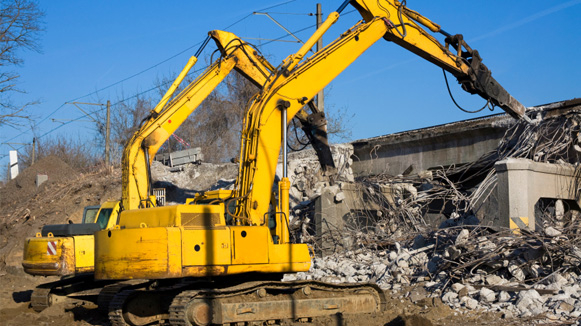 According to Sourceable, Hays is reporting job opportunities for design engineers with civil engineering experience in road building. Rail engineers are also being asked for with "track or electrification" experience. The official number of jobs becoming available sits at ten percent up compared to 2015, according to the Department of Employment in Australia.
According to Sourceable, Hays is reporting job opportunities for design engineers with civil engineering experience in road building. Rail engineers are also being asked for with "track or electrification" experience. The official number of jobs becoming available sits at ten percent up compared to 2015, according to the Department of Employment in Australia.
The developments in need of engineers are:
- Australia Inland Rail Expressway
- North West Rail Link
- WestConnex: road and rail links
- NorthConnex
- Upgrades to Pacific Highway in New South Wales
- Melbourne Metro Rail
- Western Distributor Project
- Gold Coast Rail project in Queensland
The Australian Construction Industry Forum has also expressed its confidence in civil engineering investment in the country. The current investment is $23.9 billion and could grow to as much as $30 billion by 2018/19.
Elsewhere in the world, Canada is also looking for engineering professionals in construction roles. The Conference Board of Canada states that employment growth has doubled the national average. The board observed the engineering employment hiring practices over a 17 year period.
"The rapid growth of this sector of the Canadian economy demonstrates why engineering and applied science technology offers so many promising career opportunities," said Ontario Association of Certified Engineering Technicians and Technologists (OACETT) president Bob van den Berg.
According to DailyCommercialNews, in 2013/14, 400,000 Canadians were employed in STEM careers. The government of Canada is sure that when the current string of older engineers retires, there will be space in the engineering career job listings in Canada.
The report in question was named Assessing the Economic Contribution of Canda's Engineering and Applied Science Technicians and Technologists. The report indicated that civil engineering jobs showed stronger employment growth than other statistics in the country from 1997-2014.
Good time to be a civil engineer in Australia and Canda. Eh?
- Details
- Written by: Quintus Potgieter
- Category: Industry
Hot off the press today is another revelation from a car manufacturer that has admitted to altering the truth in terms of carbon emissions data. Japanese car company, Mitsubishi, has said that the data of 625,000 vehicles was manipulated.
In a statement released by Mitsubishi, they admitted:
In connection with the certification process for the mini-cars manufactured by the MMC, we found that with respect to the consumption testing data submitted to the Ministry of Land, Infrastructure, Transport and Tourism (MLIT), MMC conducted testing improperly to present better fuel consumption rates than the actual rates; and that the testing method was also different from the one required by Japanese law. We express deep apologies to all of our customers and stakeholders for this issue.
It is currently unclear what the punishment for contravening Japanese law will be for the company. This admitting of guilt comes after Volkswagen was also found to be underreporting carbon emissions data. Opinion makers were very confident that the VW revelations would lead to other automakers admitting to the same 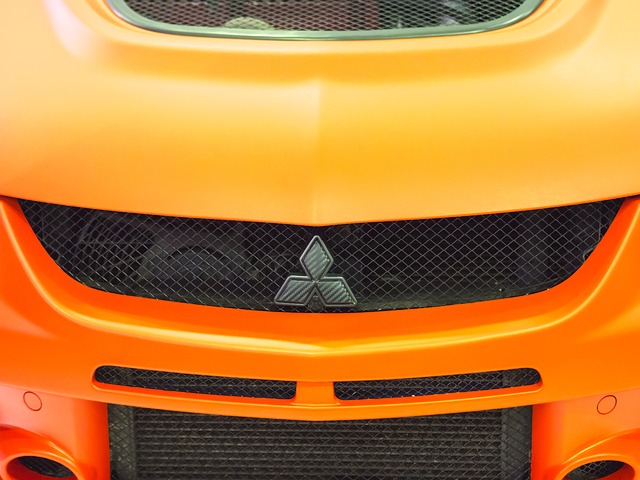 practices, which has been confirmed with Mitsubishi's announcement. The company says that it has altered four classes of its vehicles which include minivans, trucks, and passenger cars under the kei banner of vehicles manufactured by Mitsubishi.
practices, which has been confirmed with Mitsubishi's announcement. The company says that it has altered four classes of its vehicles which include minivans, trucks, and passenger cars under the kei banner of vehicles manufactured by Mitsubishi.
"The applicable cars are four mini-car models, two of which are the "eK Wagon" and "eK Space" which have been manufactured by MMC; and the other two are the "Dayz" and "Dayz Roox" which have been manufactured by MMC and supplied to Nissan Motors Corporation since June 2013," the statement by Mitsubishi read.
They also confirm that production and sales of the vehicles in question will be stopped immediately. According to Bloomberg, the company's shares fell by 15 percent on the back of the announcement.
Seiji Sugiura, an analyst at Tokai Tokyo Research Center, spoke to Bloomberg, saying: "This may be very different from Volkswagen's issue, but the market has become very sensitive to such kind of news. It may have a similar impact in terms of sales and the company's reputation."
More as this news develops.
Source: Mitsubishi & Bloomberg
- Details
- Written by: Quintus Potgieter
- Category: Education
Do you have a job that you are certain cannot be done by a robot in the very near future? Do you have skills that can survive the move to automated systems? Hold on to it. Experts are warning that robots will take over most jobs within 30 years. There seems to be a shared global understanding that the robot revolution is here and is leading to unemployment and will continue to do so into our future.
Professor Moshe Vardi from Rice University works with computational engineering and is the director of the Ken Kennedy Insitute for Information Technology. He was recently quoted by the Telegraph, saying:
We are approaching a time when machines will be able to outperform humans at almost any task. Robots are doing more and more jobs that people used to do. Pharmacists, prison guards, boning chicken, bartending, more and more jobs we're able to mechanise them.
I believe that society needs to confront this question before it is upon us: If machines are capable of doing almost any work humans can do, what will humans do?
The question I put forward is, 'Does the technology we are developing ultimately benefit mankind?
A typical answer is that if machines will do all our work, we will be free to pursue leisure activities.
I do not find this a promising future, as I do not find the prospect of leisure-only life appealing. That seems to me a dystopia. I believe that work is essential to human well-being
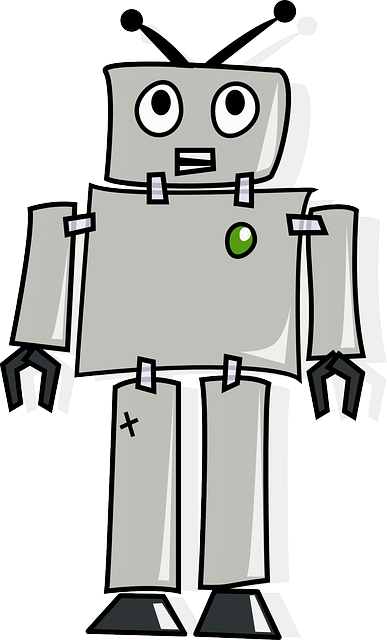
So, which industries are truly in trouble of robot takeover? There are surely jobs that would never be able to be replaced by a robot.
A recent report by the Council of Economic Advisers at the White House said that employees who make less than $20 an hour are working in sectors that are probably most at risk of being replaced by a robot.
The Pew Research Center also conducted research, nationally across the United States. The results of the survey showed that 65% of Americans think that robots will be doing most jobs done by humans today.
Steve Mackay, the Dean of Engineering at the Engineering Institute of Technology, spoke about the fourth industrial revolution that the world is currently experiencing, that is automating some jobs that humans will most likely not be doing in the near future. In the fourteenth episode of the Engineering News Network, he says: "Mainly jobs in repetitive industries...any task that can be automated is generally repetitive, unfortunately. We need to look for other opportunities."
Mackay thinks creative industries will grow as automation replaces a lot of industries that required professionals before. He also refutes that there is no shortage of STEM skills as has bee claimed in the world today. He also says there should be a focus on entrepreneurship no matter which industry you are working in and thereby you might be able to achieve more in the world where the fourth industrial revolution automates the world.
In January of 2016, the World Economic Forum (WEF) published projections that stated 5.1 million jobs would be in trouble from 2015-2020 in 15 countries due to the rise of automation in several industries. The report was named The Future of Jobs and is freely available to read. The report also suggested a host of things the world can do to further prepare for the automation overhaul in a long term situation:
1. Rethinking education systems
2. Incentivizing lifelong learning
3. Cross-industry and public-private collaboration
Klaus Schwab, founder and chairman of the WEF, said: "Without urgent and targeted action today to manage the near-term transition and build a workforce with future-proof skills, governments will have to cope with ever-growing unemployment and inequality, and businesses with a shrinking consumer base."
The widespread cautioning has been underlined in India as well. Warning students to make good decisions of what to study might future-proof the number of working humans in the future. At the Hindu Education Plus Career Counselling 2016 conference hosted by VIT University, a career consultant and analyst, Jayaprakash A. Gandhi said: "It is not enough to nurture your dreams alone. One has to understand these realities and pursue studies based on that understanding. If you do not update yourself, you will get outdated yourself. Parents should look for educational institutions that teach beyond the syllabus and should never compromise on the best college."
- Details
- Written by: Quintus Potgieter
- Category: Developments
In an effort to roll with the ever-changing punches that come with working with renewable energy sources and the likes, the French oil and gas global company, Total, has announced a new division that will focus on gas, renewables, and power.
From the 1st of September the new division will open with a president that will sit on the company's executive committee, Reuters confirmed.
"Gas, Renewable, and Power will spearhead Total's ambitions in the electricity value chain by expanding in gas midstream and downstream, renewable energies and energy efficiency," the company said.

Credit: Trend News Agency
The company wants to make it known they are throwing their weight behind ensuring that the global energy demand does not continue to produce fossil fuels and will focus on getting energy from cleaner, more renewable sources.
According to SeekingAlpha, Total plans to spend $500 million a year on renewable energies.
The move to prioritise renewable energy comes after fossil fuel prices hit all-time lows in the last year. A report by the United Nations Environment Program showed that in 2015, there was more investment in renewable energy than into fossil fuels.
It also comes after 2015 was confirmed to be the hottest year on record. The revelations of how climate change is escalating was a topic at the COP21 conference held in Paris in December 2015. Governments and global actors agreed that the world must be kept under the 5 degrees centigrade estimation that was made - granted the world doesn't do something about it. Investing money into renewable energy is a duty that global actors like Total must do.
Christopher Knittel, an energy economist at the MIT Sloan School of Management also spoke out against the use of fossil fuels this week. He said: "If we don't adopt new policies, we're not going to be leaving fossil fuels in the ground. We need both a policy like a carbon tax and to put more R&D money into renewables."
Knittel would be pleased to hear the news that Total is pumping a lot of money into renewables. Total's spokeswoman, quoted by Reuters, said: "The idea behind it [investing money into gas, renewables & power] that we will remain an oil and gas major with competitive oil assets that we can exploit with a low break-even point." They also confirmed the move would not jeopardize anyone's job in the company.
- Details
- Written by: Quintus Potgieter
- Category: Industry
And now for something completely different. Bear Grylls was right all along. Urine really does hold some sort of power. Researchers at the University of Bath and the Queen Mary University of London want to generate energy using...wait for it...urine. Allegedly, this would be able to provide electricity to rural areas at a very small cost of £1-£2. It is a microbial fuel cell that utilizing natural processes to generate natural 'electric' bacteria. This would theoretically turn urine into electricity.
The urine flows through the fuel cell which causes a reaction, thereby generating electricity that can be stored or even power electronic devices. The team responsible for this creation is the university's Department of Chemical Engineering, Department of Chemistry and the Centre for Sustainable Technologies (CSCT).
A lecturer from Bath's Chemical Engineering branch said,
If we can harness the potential power of this human waste, we could revolutionise how electricity is generated. Microbial fuel cells can play an important role in addressing the triple challenge of finding solutions that support, secure, affordable, and environmentally sensitive energy, known as the 'energy trilemma'." There is no single solution to this energy trilemma apart from taking full advantage of available indigenous resources, which include urine.
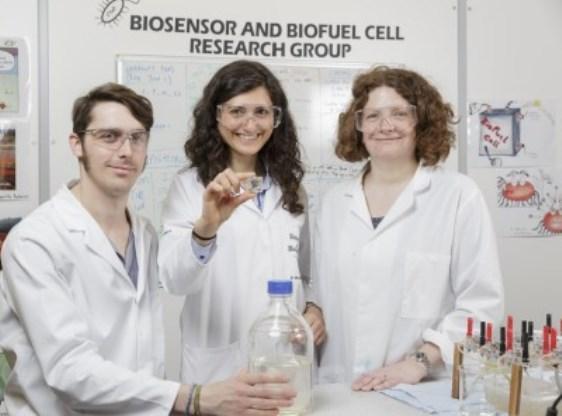
The researchers claim the cell can achieve two watts per cubic metre which would be enough energy to power a mobile phone. Yes. You can power your cell phone with your urine. Head of the Department of Chemical Engineering, Tim Mays, said: "Renewable 'pee-power' is a brilliant idea and its use in developing countries will have a huge positive impact on people's lives in areas of energy poverty."
The paper titled Towards effective small scale microbial fuel cells for energy generation from urine was published in the Electrochimica Acta journal. The team also states in the abstract that they were able to connect three devices together and achieve an output ten times higher than one cell by itself.
The team is now continuing their work into improving the power output and think that they can come up with more efficient designs that could actually see this cell making its way to impoverished communities.
Source: The Bath Chronicle
- Details
- Written by: Quintus Potgieter
- Category: Developments
Another day, another battery. Lately, all the battery news out there is about lithium-ion and how it is going to be our saving grace in the world of saving energy and producing clean energy in the world of today. However, lithium-ion production isn't as safe as most people think, so a safer alternative is always being looked for and researched.
A team of engineers from the US Pacific Northwest National Laboratory in the Department of Energy has found that using zinc-manganese could lead to an "inexpensive" rechargeable battery. According to NewElectronicsUK, it would be as inexpensive as a car battery.
Jun Liu, one of the engineers working with the team said, "The idea of a rechargeable zinc-manganese battery isn't new; researchers have been studying them as an inexpensive, safe alternative lithium-ion batteries since the late 1990s. But these batteries usually stop working after just a few charges. Our research suggests these failures could have occurred because we failed to control chemical equilibrium in rechargeable zinc-manganese energy storage systems."

Could it replace lithium-ion as the next battery to trust with our future of producing clean energy? Unlikely due to the amount of money being invested into lithium-ion. Tesla has just built their lithium-ion producing factory in Nevada, and we assume that they wouldn't throw their money behind lithium-ion if they haven't investigated and estimated what other batteries might have made their way to the market in the near future.
However, in terms of safety, there have been some reports that the first wave of energy storage units that are being installed in houses are not as safe as customers would like to think they are.
Moreover, when the Pacific Northwest National Laboratory teamed up with the University of Washington, to put their zinc-manganese batteries through the same tests lithium-ion batteries went through they discovered something interesting. It didn't follow the same processes lithium-ion goes through.
According to Science Daily:
Instead of simply moving the zinc ions around, their zinc-manganese oxide battery was undergoing a reversible chemical reaction that converted its active materials into entirely new ones
The team thinks they might be able to produce an efficient battery by continuing their research into zinc-manganese oxide batteries.
After a few more tests with some added manganese ions to electrolytes in multiple test batteries, the results were conclusive for Jin Liu. He said: "This research shows equilibrium needs to be controlled during a chemical conversion reaction to improve zinc-manganese oxide battery performance. As a result, zinc manganese oxide batteries could be a more viable solution for large-scale energy storage than the lithium-ion and lead-acid batteries used to support the grid today."
- Details
- Written by: Quintus Potgieter
- Category: Developments
Engineers in Japan are working with what they are calling 'electronic skin' that would be able to bind to your body and display information. There has been some chatter about electronic skins that can repair themselves but this is one of the first working prototypes that actually displays information on it. The researchers say that the skin uses organic light-emitting diode (OLED) which is used in smartphone and television technology. Therefore, you would become a walking, talking smartphone television.
The team from the University of Tokyo have worked on an adhesive protective coating that would protect the electronic elements of the skin from the exposure to the outside world.
Takao Someya, a professor in the Department of Electrical and Electronic Engineering at the University of Tokyo, in an interview with Live Science, said: "Our e-skin can be directly laminated on the surface of the skin, allowing us to electronically functionalize human skin. We think functionalizing the skin may replace the smartphone in the future. When you carry an iPhone, it is a bulky device. But if you functionalize your own skin, you don't need to carry anything, and it's easy to receive information anywhere, anytime."
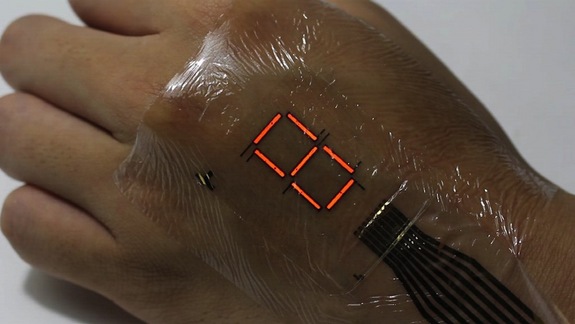
Other prototypes of electronic skin have been made but have allegedly not been as successful as Someya Lab's has, due to air exposure which renders it useless most of the time. Someya's team of engineers was reportedly able to ensure a longer lifespan due to the protective film they have developed.
The film is called a 'passivation layer' and includes "inorganic silicon oxynitride and organic perylene" according to Live Science.
Someya says the ultra-thin skin could monitor people's health and inform a person of how much oxygen is coursing through humans' veins.
On top of that, they say the displaying of information is something they are interested in implementing with the new e-skin.
"The potential uses ranges from information display to optical characterization of the skin," said John Rogers, a professor of science and engineering at the University of Illinois. "Opportunities for future research in this context include the development of power supply systems and of wireless schemes for data communication and control."
The journal ScienceAdvances published the article under the title Ultraflexible organic photonic skin.
The abstract says:
Thin-film electronics intimately laminated onto the skin imperceptibly equip the human body with electronic components for health-monitoring and information technologies. When electronic devices are worn, the mechanical flexibility and/or stretchability of thin-film devices helps to minimize the stress and discomfort associated with wear because of their conformability and softness.
- Details
- Written by: Quintus Potgieter
- Category: Developments
There are endless possibilities in the Internet of Things industry for engineers. All you have to do is head on to jobs listing websites to see how many software engineers are in demand in the Internet of Things industry. You could see yourself working for Google or Microsoft or Intel in this new wave of jobs available due to the push that the industry is experiencing.
It doesn't stop at software engineering - not by a long mile. Manufacturing.Net writes that job postings have reflected positively for professionals in circuit designers, microcontroller programmers, and electrical engineer. Gartner, a company that deals with information technology research posted their results and said by 2018, 75 percent of IoT projects will "take double the time to complete that was planned for them".
Gizmodo India reports that in five years the IoT industry is looking at a revenue of about $500-600 billion. This would surely make the IoT industry the most important industry in the world in the next five years and crop up a host of new jobs that engineers can fill out, and earn the money that is being estimated here. The estimates came from Sanjay Kaul, who is a Managing Director at Cisco India. He said, "We see a massive opportunity in IoT. Right now, I think we are in the mobilisation phase. I would say 2017-2018 would be execution and 2019, you would see solid revenues pouring in and giving rise to a lot of job opportunities."
It seems India wants to jump on the IoT train whilst it is trending. According to India's Economic Times In New Dehli, a multinational company named NIIT will be training 20,000 students in technologies such as Internet of Things, robotics, and virtual reality.
NIIT President Prakash Menon said, "Looking at the digital transformation across industry verticals, we want to create a talent pool that is equipped with skill sets required...Owing to this growing demand, entry-level and experienced workforce with Digital Transformation Skills are attracting higher salaries as well compared to those traditional IT skills."
Manu Kumar V who works in the IoT industry at HCL Services LTD, told Gizmodo: "An experience in doing multidisciplinary engineering projects with knowledge of at least two or three domains would come in handy. Apart from this, functional knowledge of bid data is important as it's a major force likely to drive the Internet of Things. Information security along with knowledge of data ethics and privacy policy would be increasingly sought-after as concerns over the potential exploits and privacy concerns of the web rises. The versatility of IoT makes collaboration skills -- knowing how to collaborate with people in different industries -- a key requisite for IoT pros."
Therefore, engineers in web security are also going to be in demand for jobs in IoT. There are so many facets to the IoT industries that it might be an incredibly oversaturated industry but one that keeps on giving.
- Details
- Written by: Quintus Potgieter
- Category: Education
The robo-apocalypse is almost here if a recently designed robot grows even stronger. A team of engineers from Harvard John A. Paulson School of Engineering and Applied Sciences have built a bot that would go up against the best of the best battle bots and then just simply shoot them down.
A recent competition named the Mech-Warfare Contest was held at Sheperd Univeristy at an annual meeting called ShepRoboFest. The Harvard boys' robot was the winning robot. In the competition, the robots shot BB-guns at enemy robots which would then result in the robot getting points. The engineers would sit in a different room and would control the robots and let them fight,
The engineers are part of a team named the Harvard Undergraduate Robotics Club (HURC) and has been designing the robot for two years before they started to build it over a collection of months.
John Alex Keszler, a student studying electrical engineering in the group, spoke to Harvard's website and said: "There was a real watershed moment when we finally had the code and structure, so we put it on the table in the Active Learning Labs. sent the signal a few times, and eventually, it stood up. In a split second, it went from being a just a pile of rubble and wires to a 'living machine'."
One of the flaws the engineers does admit is that the robot's walking is not ideal. Just imagine that thing walking towards you and trying to shoot you.
"We built this robot almost completely from scratch. In a way, it is kind of like our child. This is, by far, the coolest thing I've ever built. It was such an immensely powerful moment to watch our creation compete," said Timothy Tamm, one of the students getting his qualifications in computer science. "One of the things we strive for at HURCS is to make everybody a multidisciplinary engineer. Everybody comes to us with an area of comfort and expertise, but we all got out of our comfort zones to help produce the robot. I think everyone of us has learned a new skill and become a broader engineer from working on this project."
Source: Harvard John A. Paulson School of Engineering and Applied Sciences
- Details
- Written by: Quintus Potgieter
- Category: Developments
The equivalent of US$2.2 million in funding has been given to an initiative at the University of Sheffield that pertains to energy storage. The energy storage solution being funded could lead to sustainable energy for the railway business. The project is called the TransEnergy project and is collaborating with National Rail, a partnership that will lead to the powering of railways in the United Kingdom.
Reportedly, energy is consumed at a high level during peak hours in the UK, which is enticing engineers into seeing whether or not energy storage is a viable option for these hours. What the engineers are suggesting is that electric cars parked at a train station lend energy to the station. In return, the customers would get free parking for their contribution to the energy generation at the station.
The engineers are confident it will reduce demand for high amounts of energy during the peak hours and in turn gives passengers who park their cars at stations some added benefits.
According to Phys.org a report published by the National Infrastructure Commission on energy storage revealed that if there is assistance with energy storage through contribution, it could save consumers up to £8 billion by the year 2030. As a result, the UK would meet a goal it has for carbon by 2050 and secure UK energy for further generations.
The entire operation is being funded by the Engineering and Physical Sciences Research Council (EPSRC) with assistance from the University of Leeds and the University of Southampton.
To test the sustainability of the project the team of engineers will build a lab that will facilitate testing of energy storage options and how the batteries would assist the powering of trains.
Dr Martin Foster from the University of Sheffield's Department of Electronic and Electrical Engineering, spoke to Phys.org and said, "Similar energy storage systems are already being used on the electricity grid during peak times and by translating these to our railways, we could deliver real benefits to both rail companies and consumers, bringing down the costs of travel and improving services."
James Ambrose, the Principal Engineer for Network Rail said, "Network Rail is committed to electrifying more lines in the UK. Our project will be working with rail providers to recommend new approaches that will mean increased efficiency for the industry."
Should this work and prove sustainable, it could revolutionize the way railways power trains around the world. However, convincing someone to plug their electric car in and use some of its energy storage capability to power a train station might be a tall order.
- Details
- Written by: Steve Mackay
- Category: Blog - Steve Mackay
Dear Colleagues
I often get comments from people wondering why I spend time every week writing these musings. Well; apart from the PR (for our engineering training) which helps to keep me off the streets, I actually learn even more from you guys with your responses.
1. Buy or Roll thy own engineering software tools
One of those perennial issues we get confronted with on a regular basis is the choice of buying your engineering software off the shelf or writing your own. Or at least cobbling it together from existing programs. Especially in today’s market when you may have more programmers available and the cost of the software off the shelf is often exorbitant. I have been down this route so many times and often made the wrong decisions. Obviously, if it is Word processing package or an engineering CAD package; you are unlikely to write your own; however it becomes a bit more debatable when, for example, you can purchase an industrial automation package already written for a particular plant or application and you can “simply plug it in” (well, that is what the vendor would like you to believe). I know we all have nightmares of being trapped in buying something which is rubbish and we should actually have gone down the hard road of writing it ourselves.
In essence, with engineering software what you are really after is:
- Availability – it should run and work smoothly with all your other tools
- Efficiency – minimal overhead meaning it is quick to operate
- Reliability – it doesn’t crash in a different hardware/software environment but runs without a hiccup
- Functionality – it should offer the functions you require – no more – no less
- Sustainability – it is constantly updated as new problems and situations arise with your systems
- Economy – it is not fiendishly expensive imposing a horrendous permanent $ burden on your project or product
It is virtually impossible for an in-house developed engineering software product to deliver consistently on all the above. Only a commercially produced package with tens or indeed thousands of iterations and many many installations can come up with this.
Why is an engineering software tool so hard to develop in-house?
A few quick points on this score:
- Commercial packages have been developed over a long period of time with many different clients and programmers – you are unlikely to have this with your own in-house developed software .
- You are exposing yourself to significant commercial risk. If you are handicapped by a tool that should have been purchased off-the-shelf you may be defocusing on your core mission. You may only need a small increase in productivity to justify paying for this commercial software tool.
- Others have been there and done it with a commercial package.
- You will achieve increased functionality due to wider usage
- What about the future? A software package doesn’t just stop but requires ongoing development. There is some degree of future proofing due to more support and R & D staff with off-the-shelf developed software. Somewhat questionable in today’s gloomy business world but generally true if you purchased your product from a reputable organization
- Your software developers don’t walk out of the door when they decide to move on
- Training new staff on how to use the package. You have to find someone to do this to a high level. Doing it in-house is often difficult.
- Ongoing maintenance for changes to your hardware and software environments. This has to be done as your needs change.
- And paradoxically – Customization. This is often quoted as the main reason to write the software in-house. But you may find the elements you require are already written for some other client in an off-the-shelf package.
So the standard mantra of our application being too different/special/customized for a commercial off-the-shelf tool is not necessarily always true.
Obviously in buying something off-the-shelf with millions of items sold as with a computer; one should bear in mind this sage advice:
If the automobile had followed the same development cycle as the computer, a Rolls-Royce would today cost $100, get a million miles per gallon, and explode once a year, killing everyone inside.
Robert X. Cringely, InfoWorld magazine
My grateful thanks to one of those enduring electronic design engineers, Steve Ciarcia, who wrote hands-on electronics projects for Byte Magazine. This is based on an article by him and CMX-Systems on real time operating systems. Adapted to engineering software based on my mixed experiences.
Yours in engineering learning
Steve
Mackay’s Musings – 19th April’16 #596
780, 293 readers – www.eit.edu.au/cms/news/blog-steve-mackay
Blog - Steve Mackay
EIT's Technical Director, Steve Mackay, enjoys keeping his blog up-to-date with useful tips and current industry matters for his fellow colleagues. He has a loyal and expanding following base reaching over 300,000 people around the world.
Student Stories
In this section you have the opportunity to read and listen to EIT students talking about the reality of the programs. Discussions are wide-ranging and include information about the study commitment required, the value of the qualification in their careers, the relevance of the subject matter, future pathways, and more. They provide valuable feedback for you to take into account before you decide to join one of our programs.
Career Information
Latest career information including industry research, podcasts, blogs, life hacks and general information about how you can make the most out of your career.
Education
Here you will find out more about the latest trends and developments within education worldwide, along with some helpful articles regarding study tips and keeping on track with your studies.
Developments
The latest innovation and inventions from the world of engineering can be found here. Learn about advances in technology and how they can make a real difference within your industry.
Announcements
Keep up to date with the latest announcements from the Engineering Institute of Technology. In this section you can read more about new courses, new recognition from professional bodies, our Excellence in Teaching Award, upcoming free webinars and much more.
Monthly Update
We understand that you may not have time to read all the articles that we post, so our monthly update gives you access to some fascinating articles which cover the best of the months news in a compact format.
Engineering Resources
The key objective of the Engineering Institute of Technology is to provide outstanding practical engineering and technology education. Together with several industry and educational partners we gladly share the following resources and information to assist you along your professional development path. Please note that some of the articles will open a new internet browser tab and redirect you to other partner websites.
